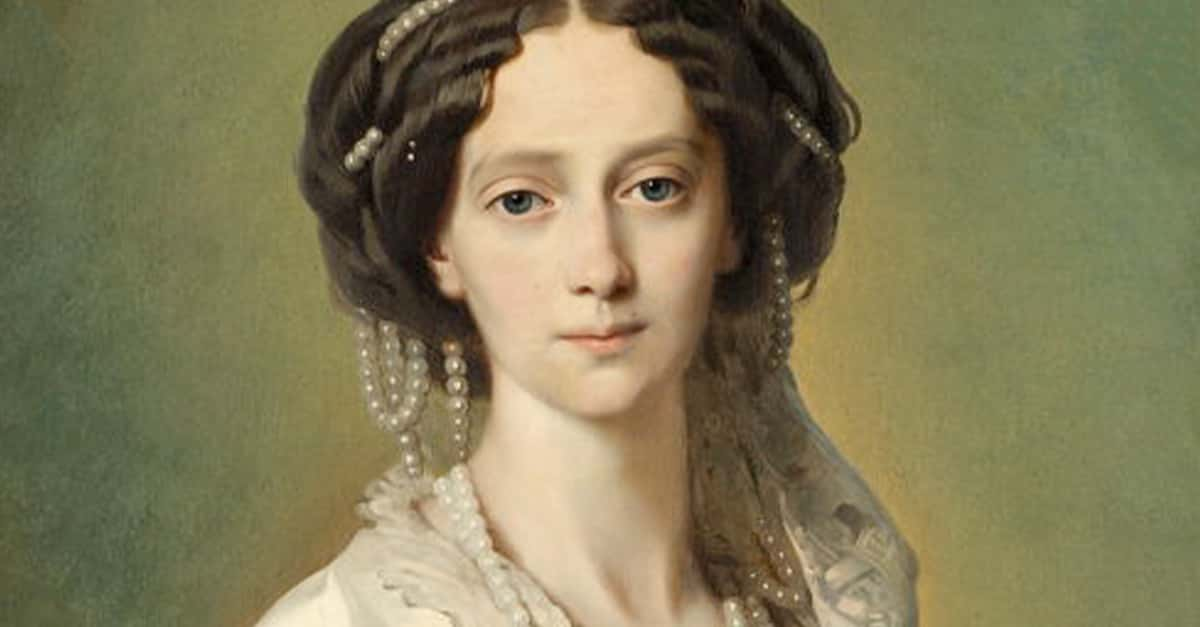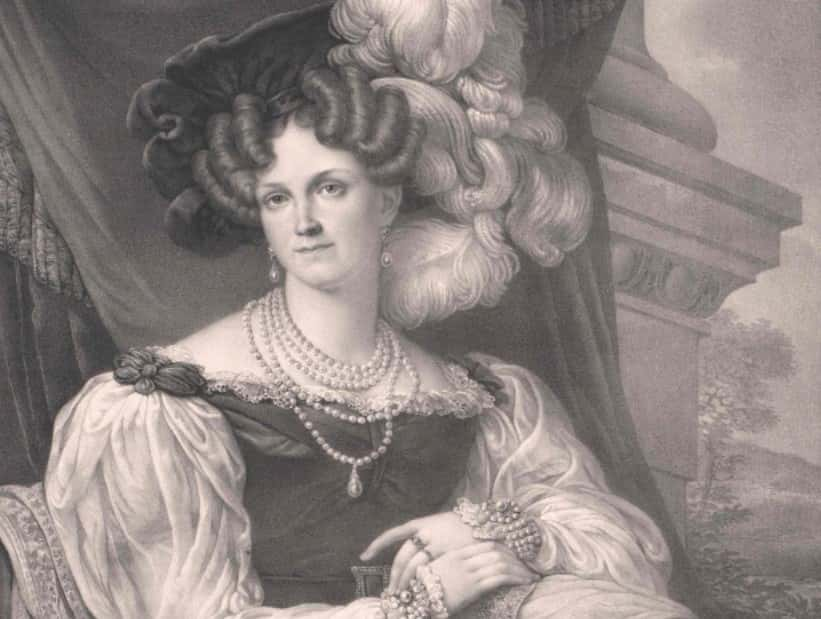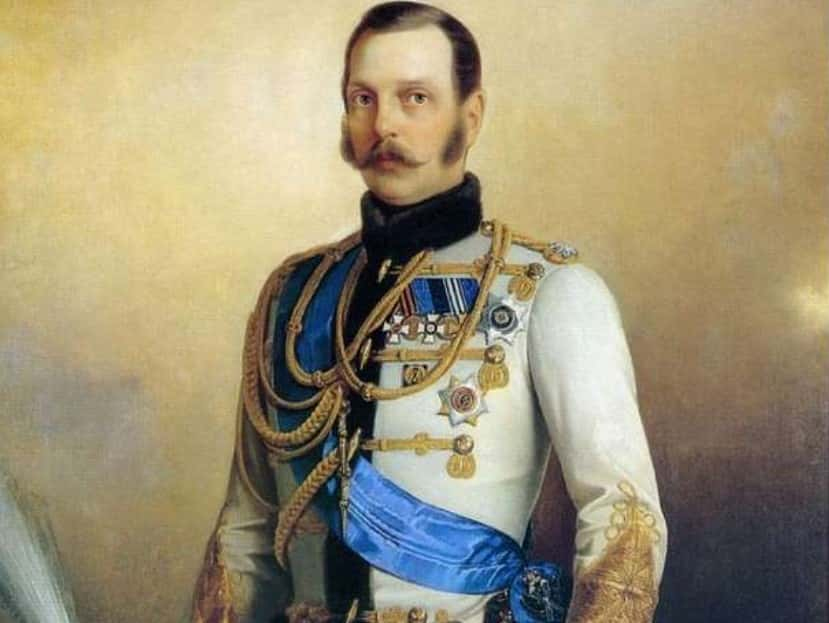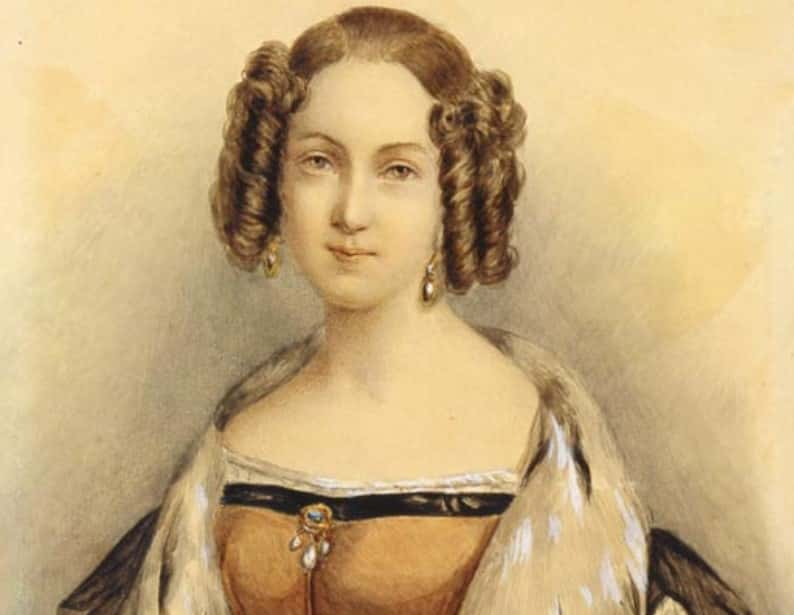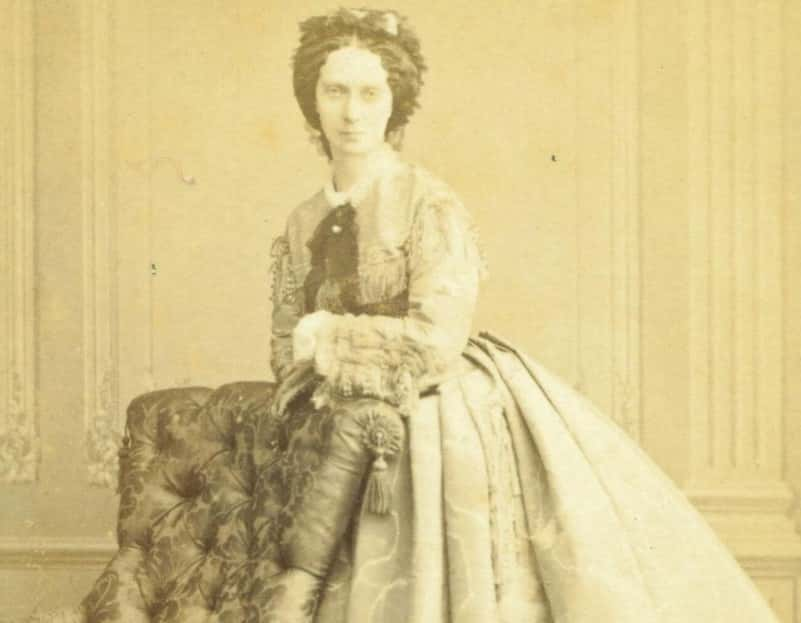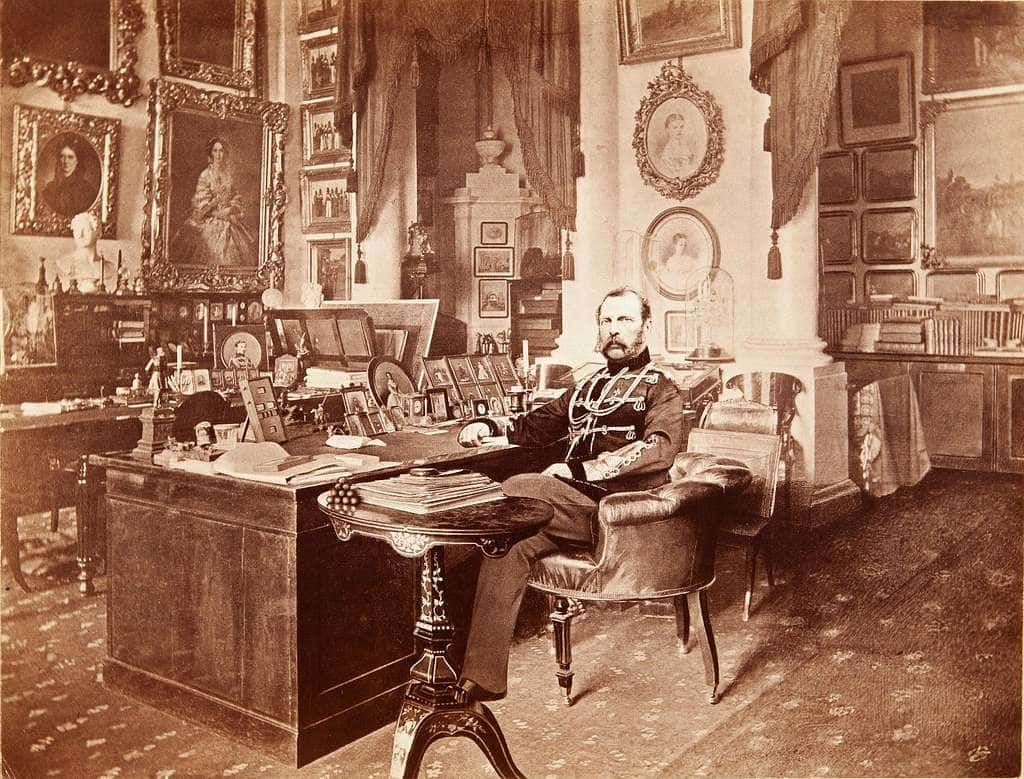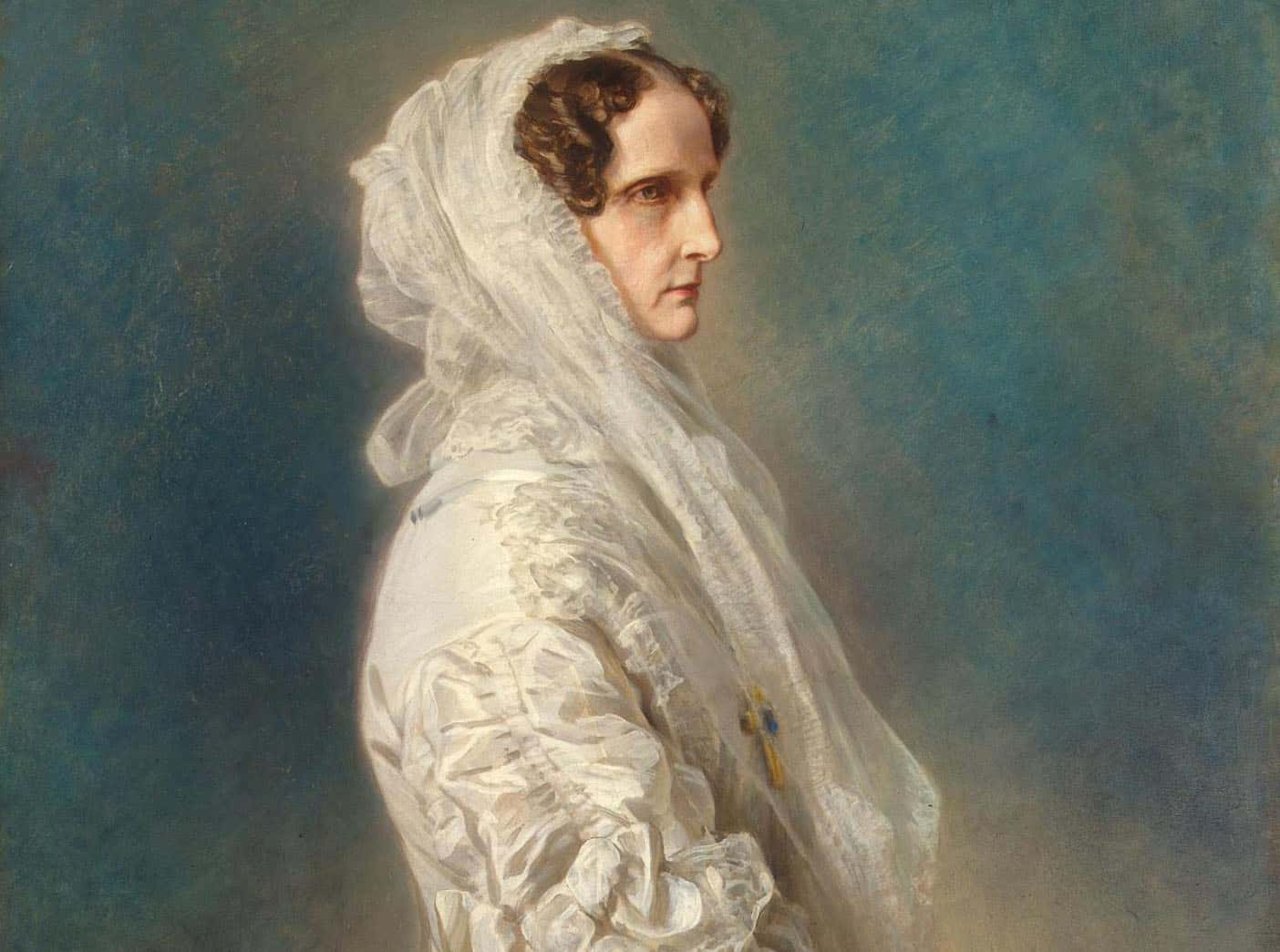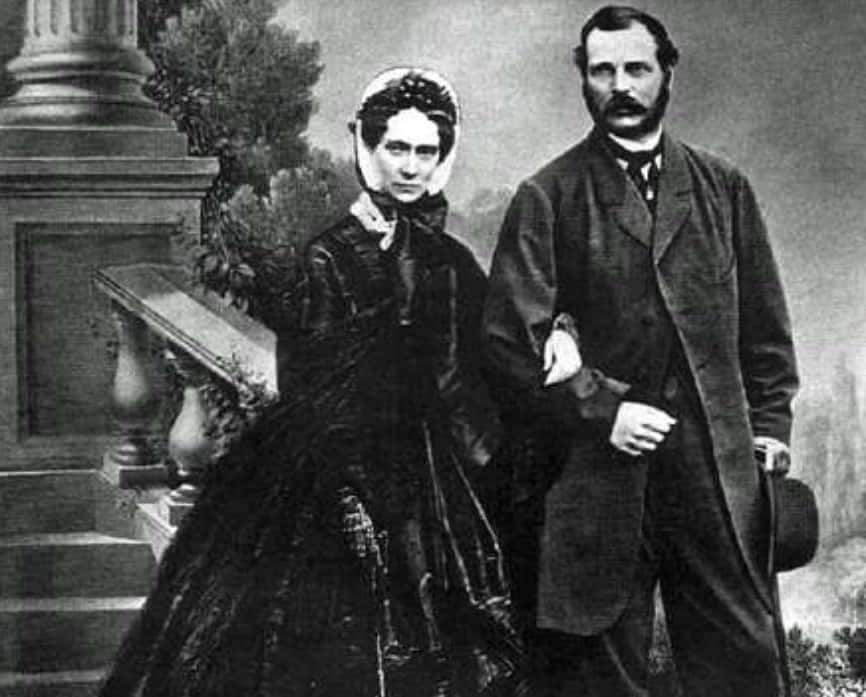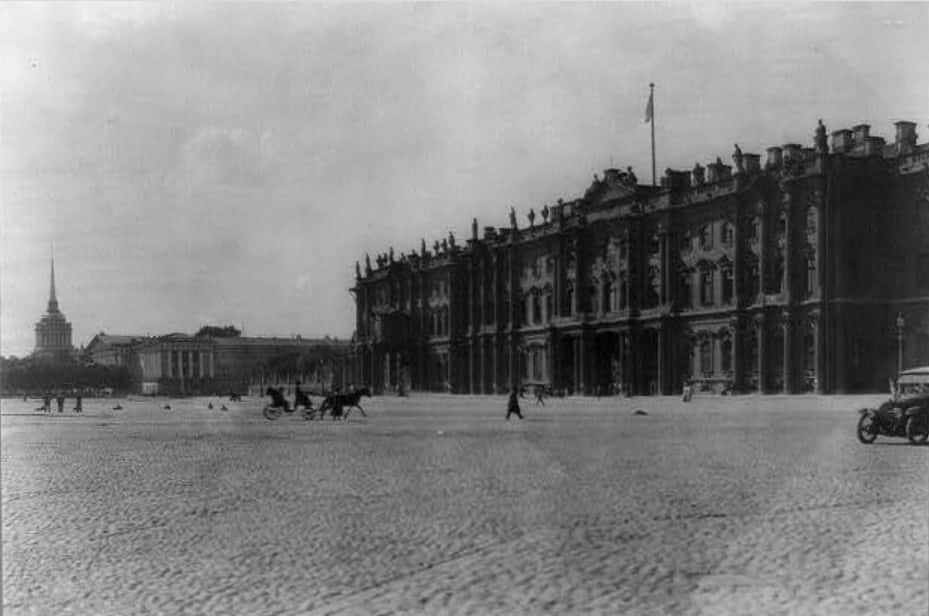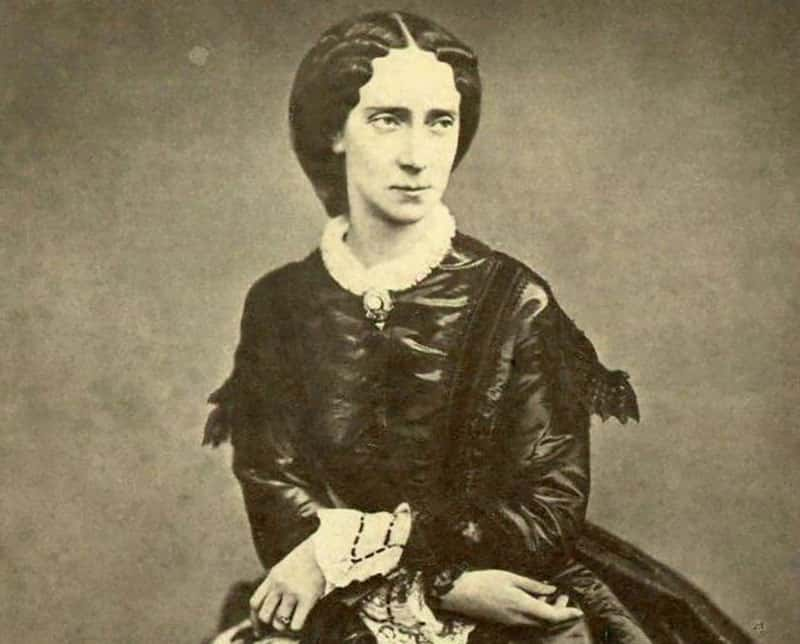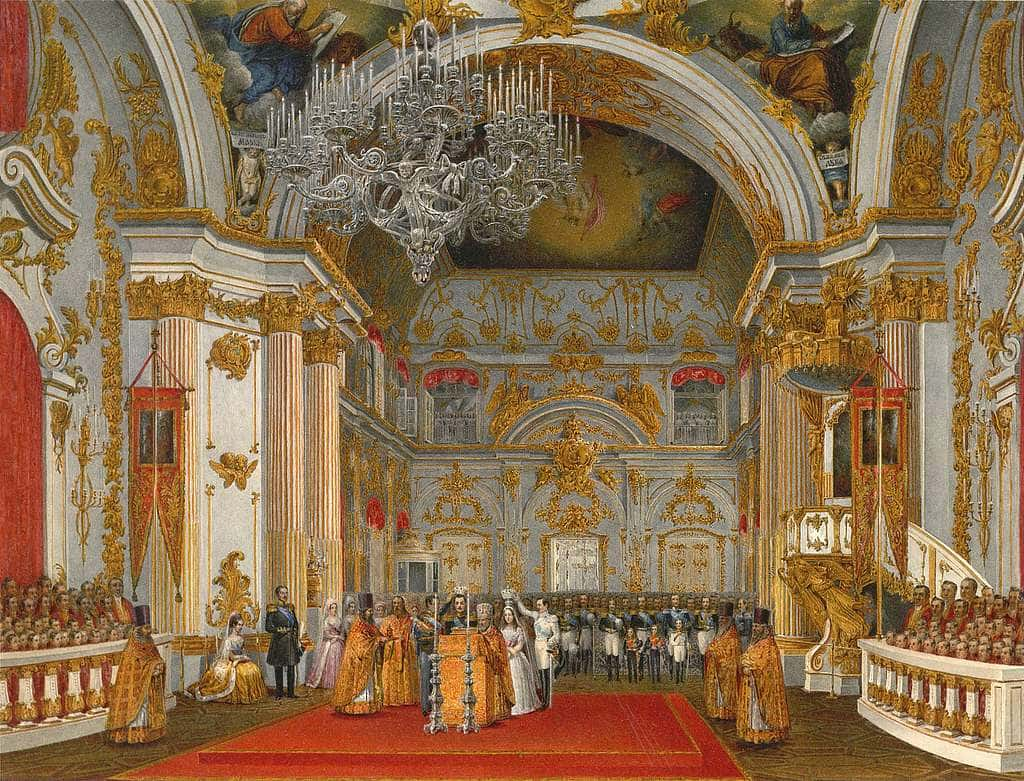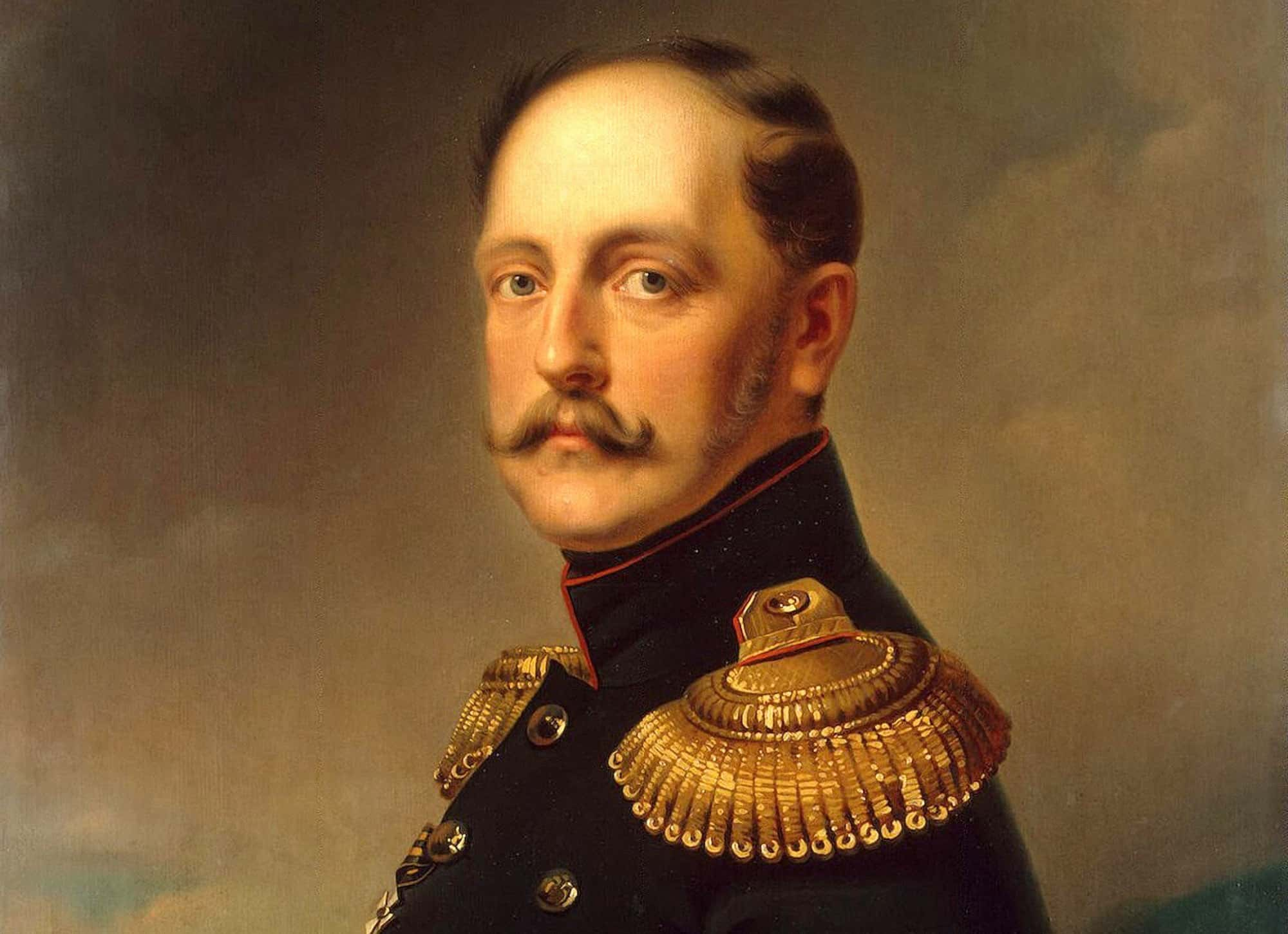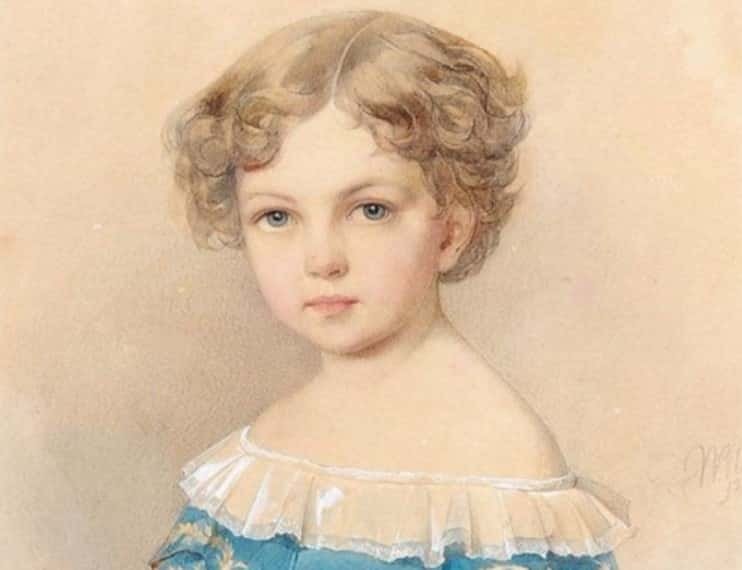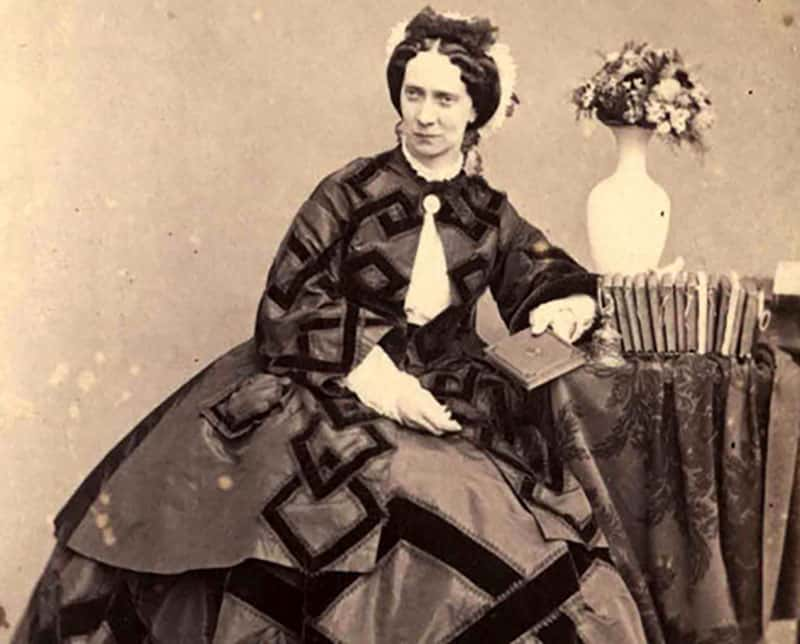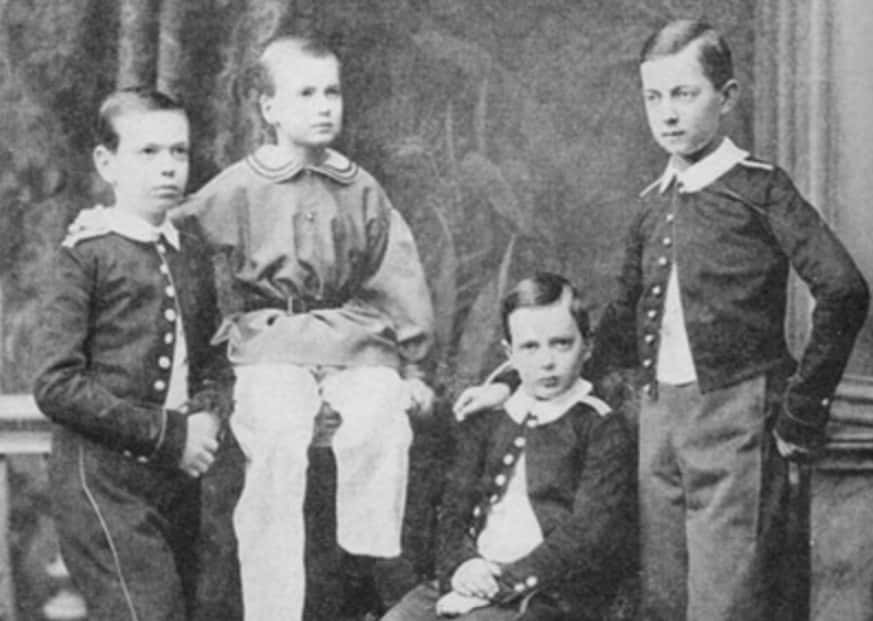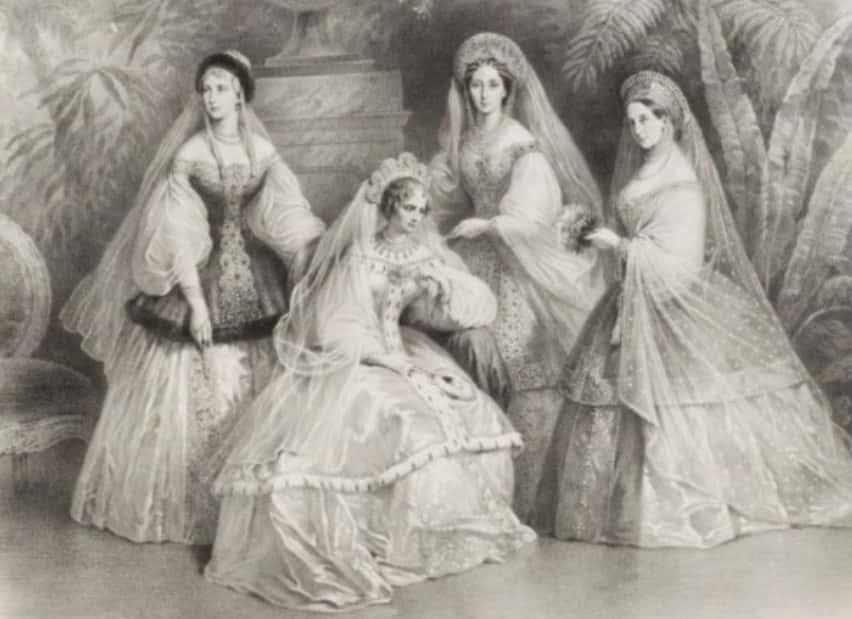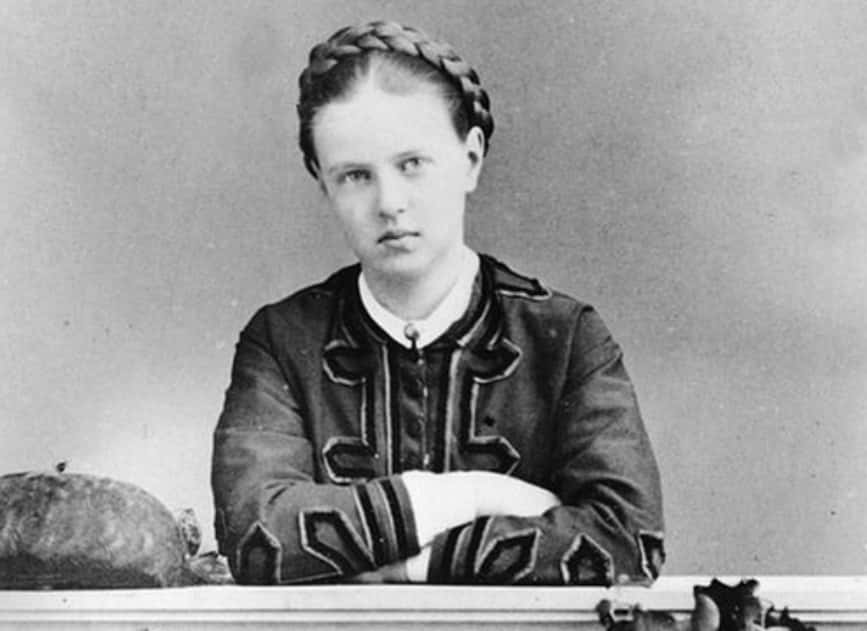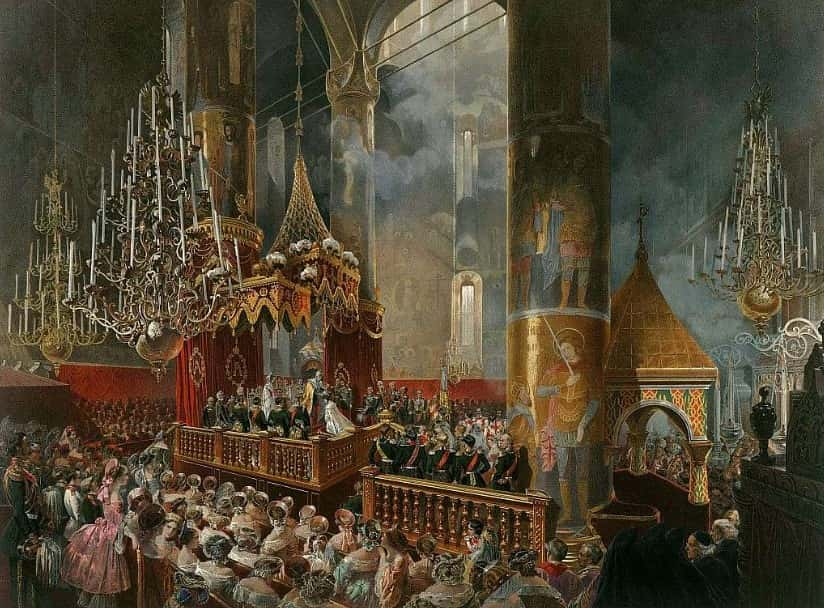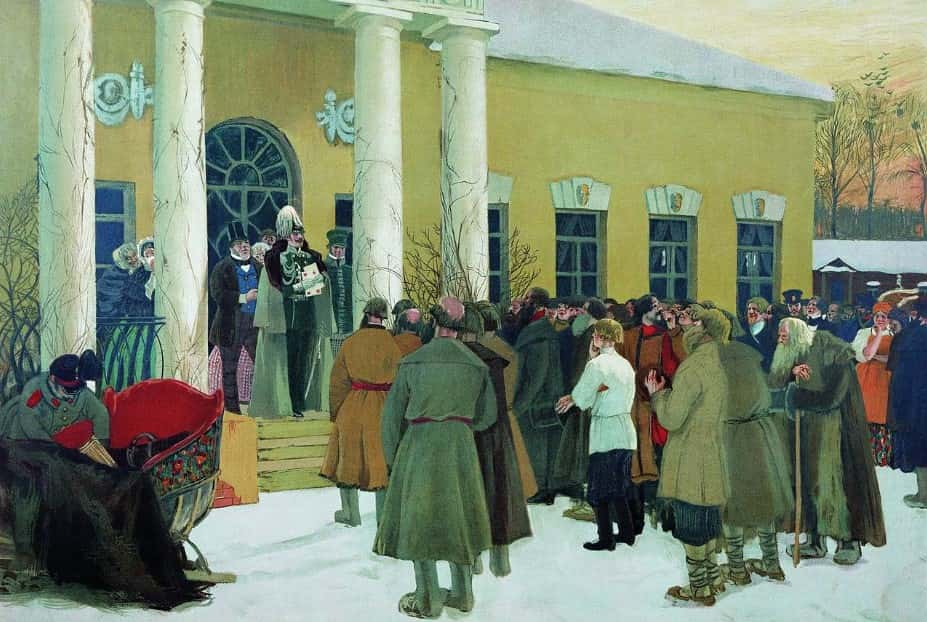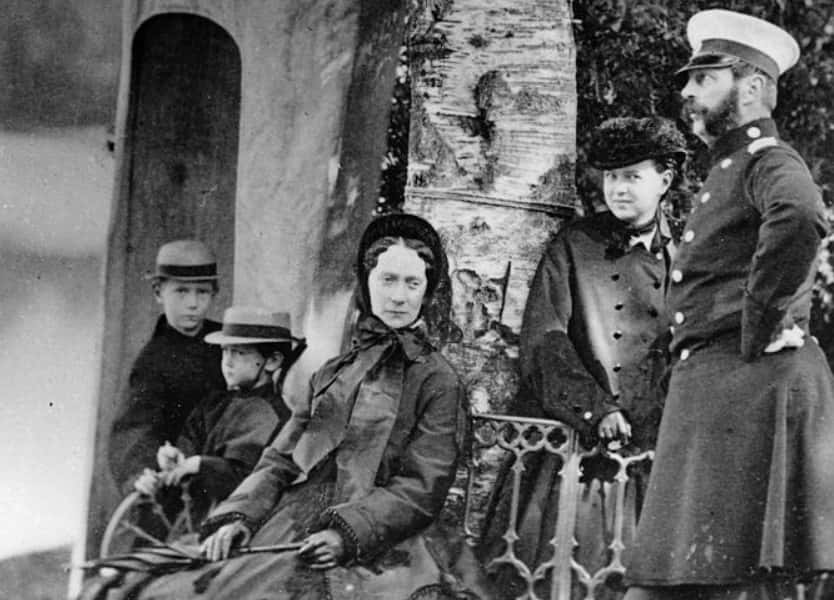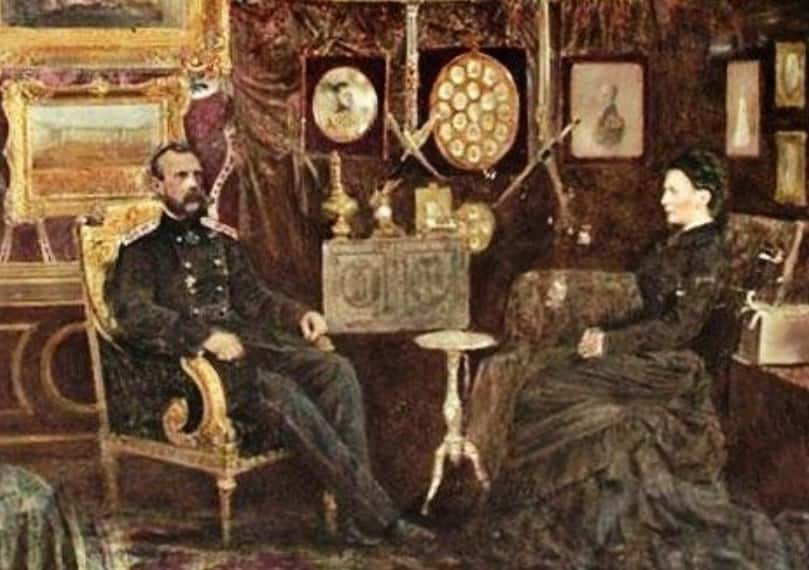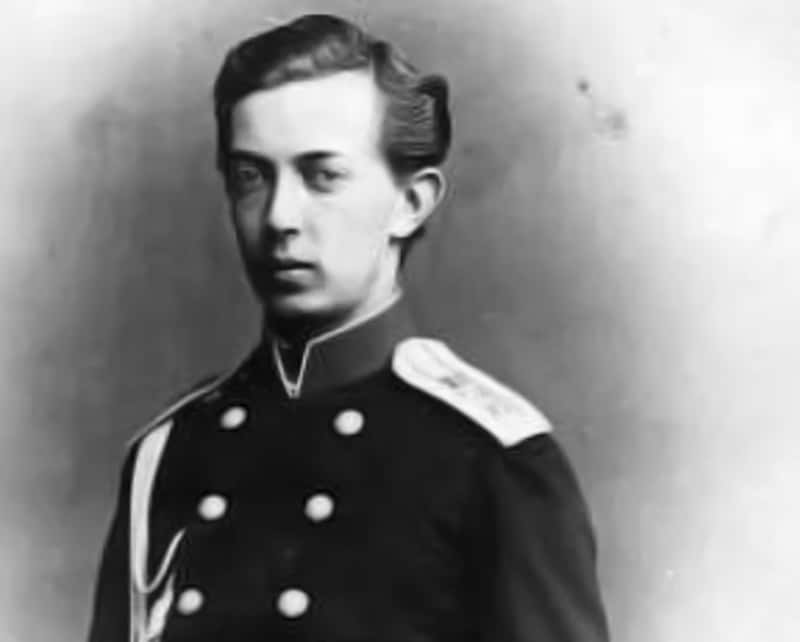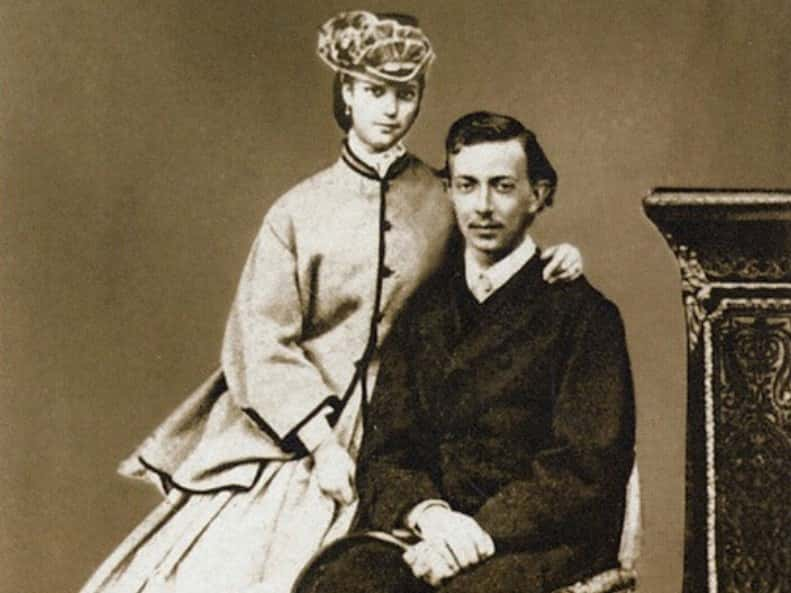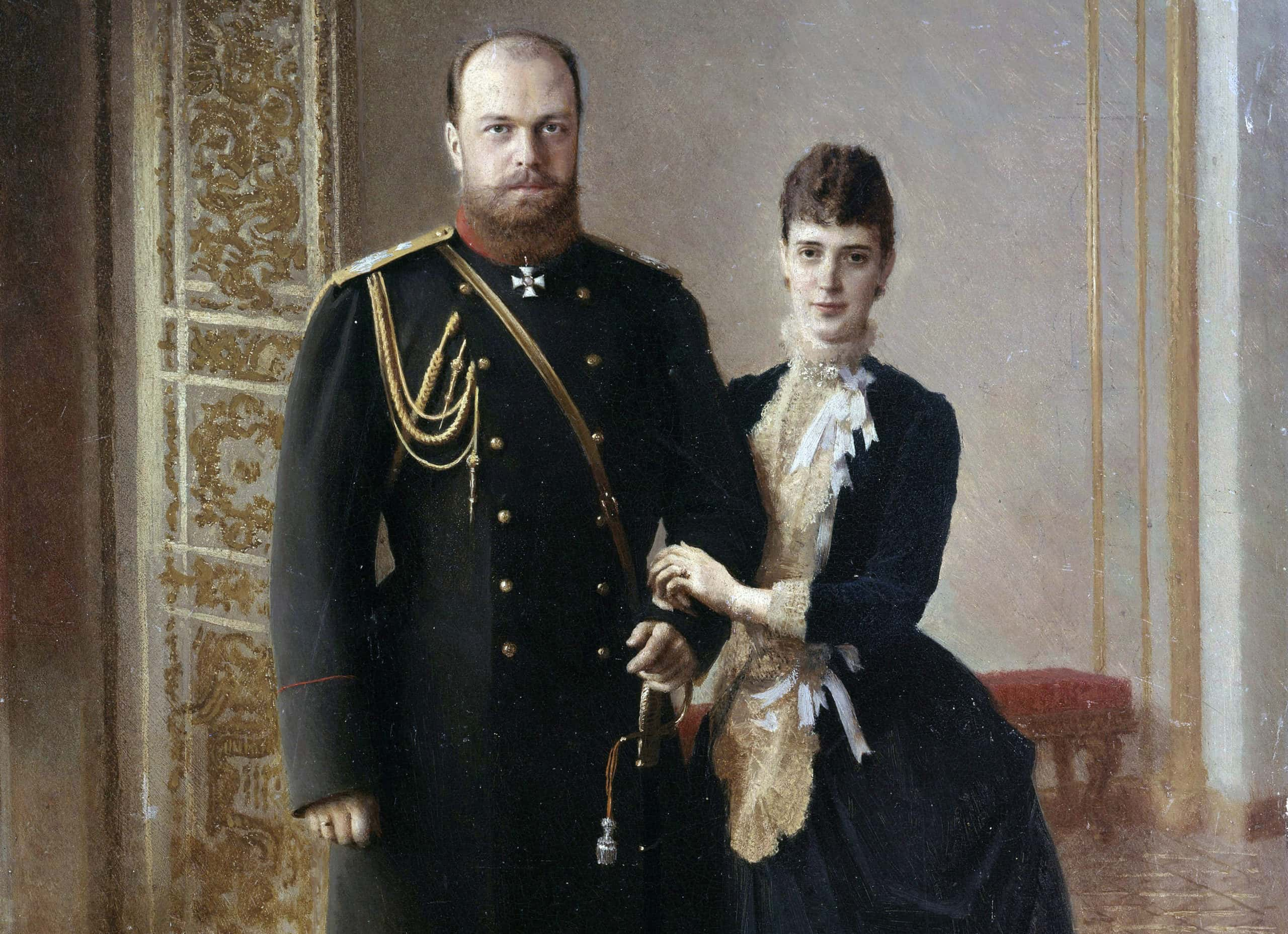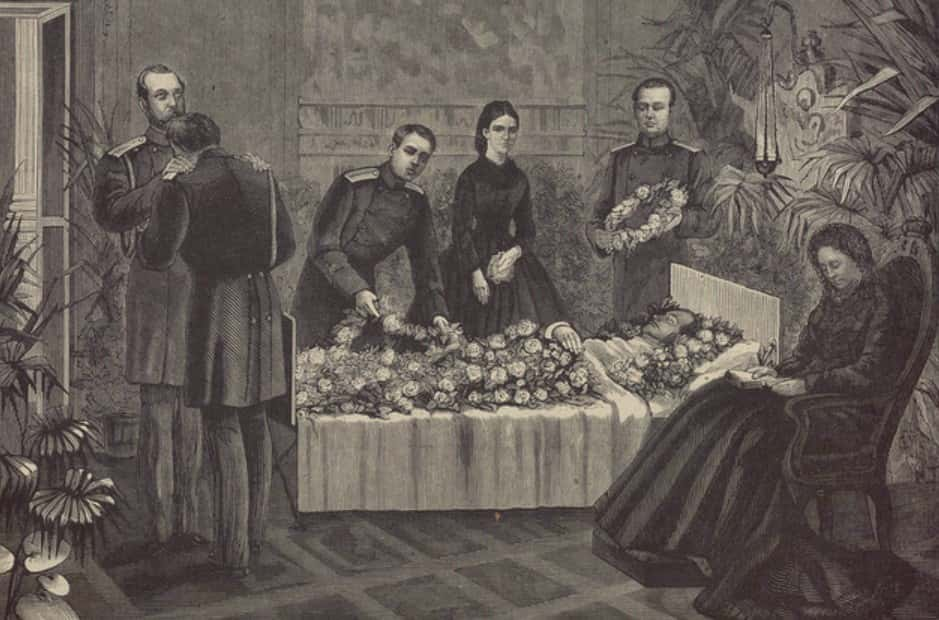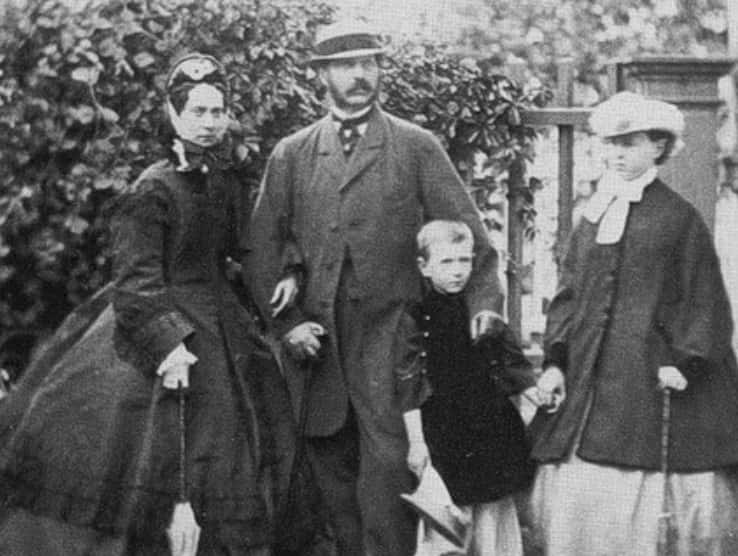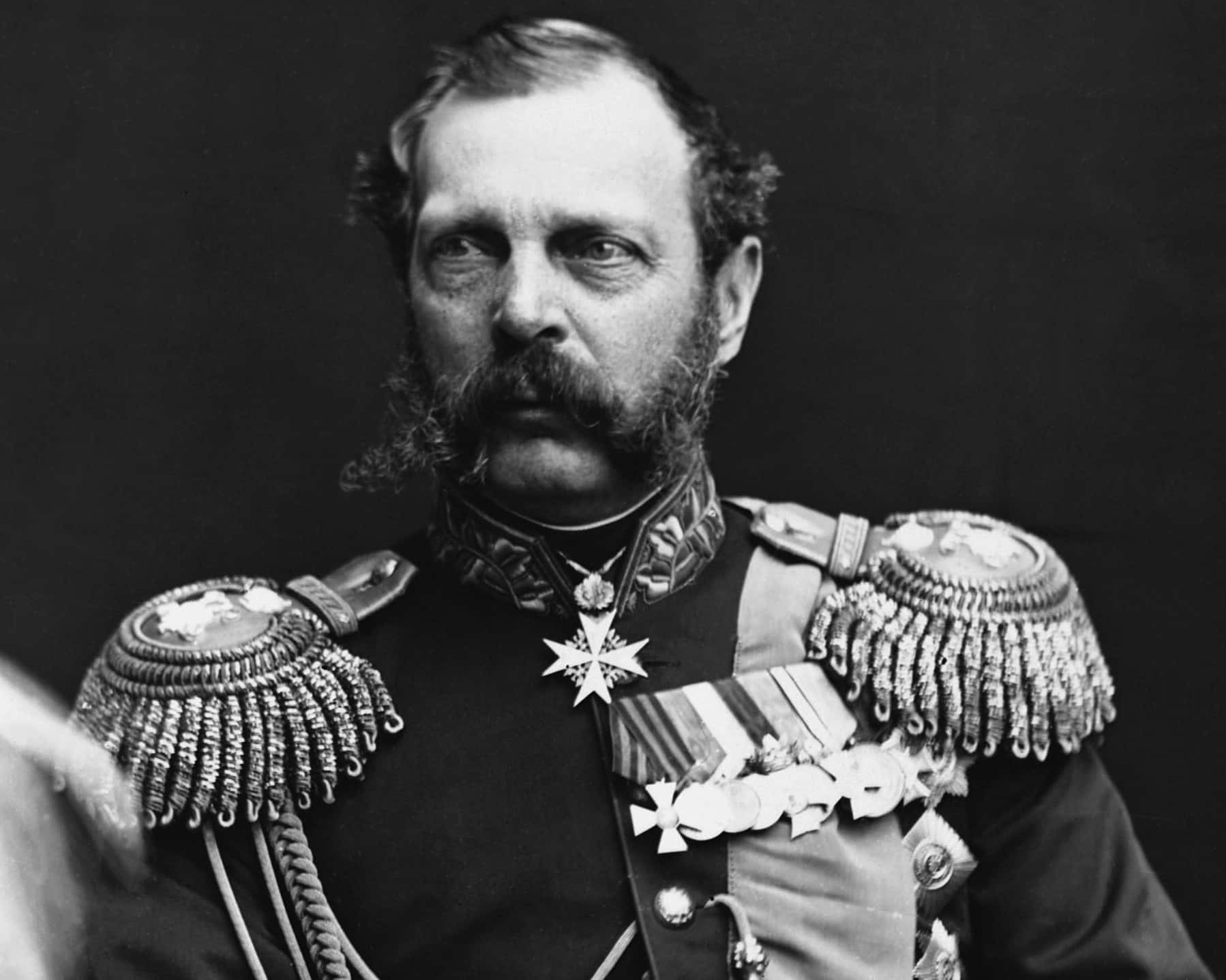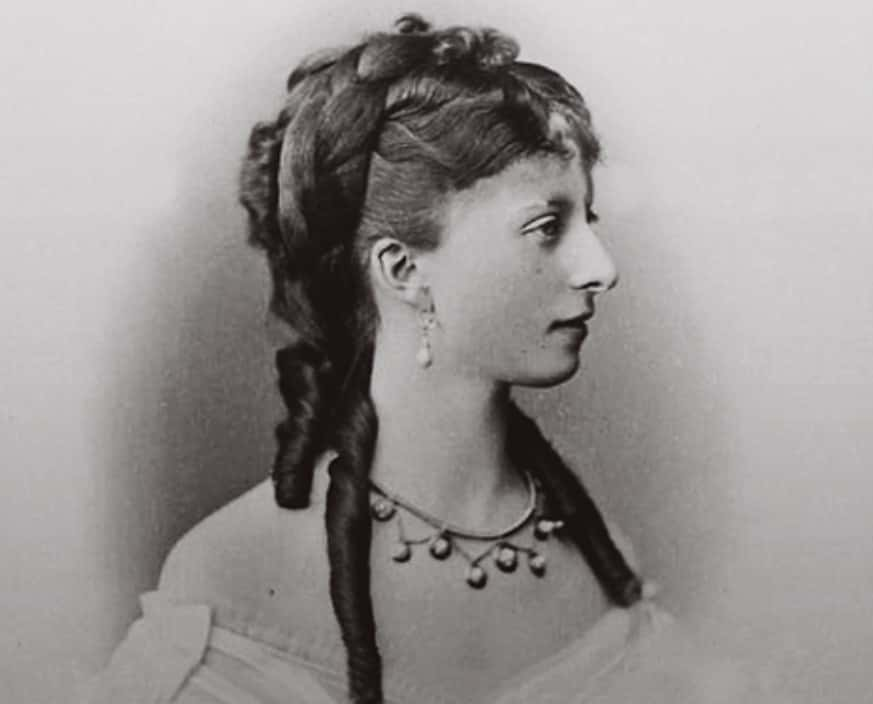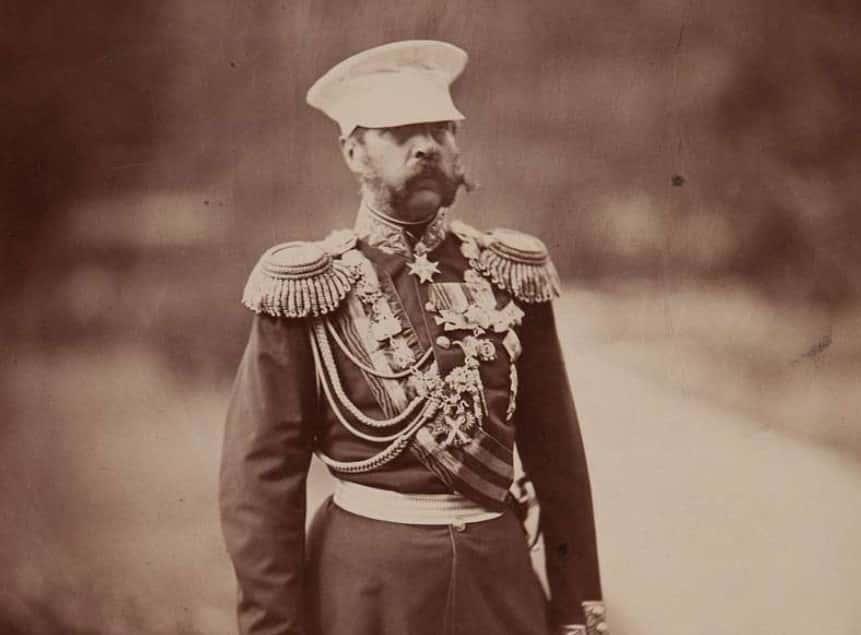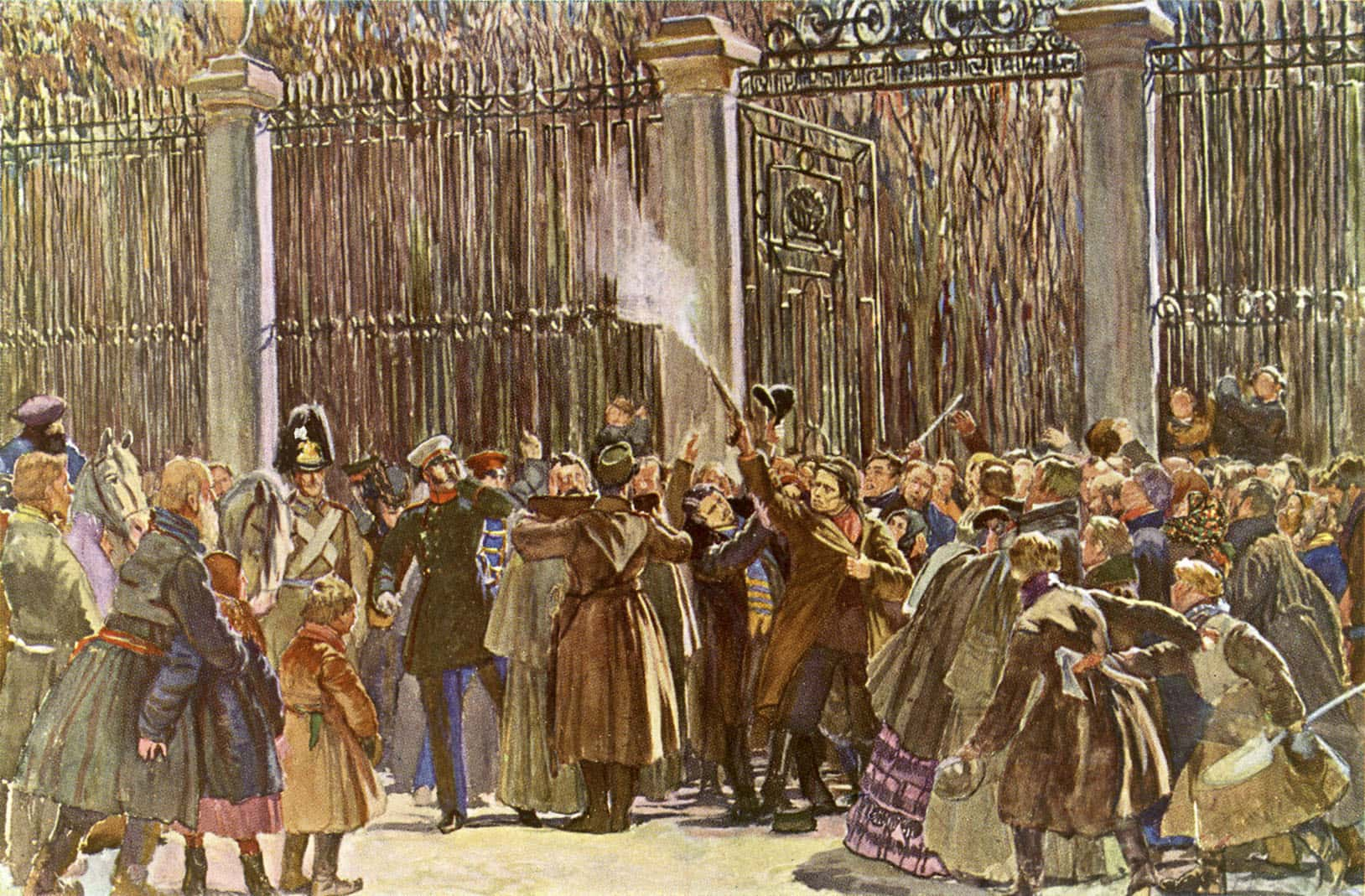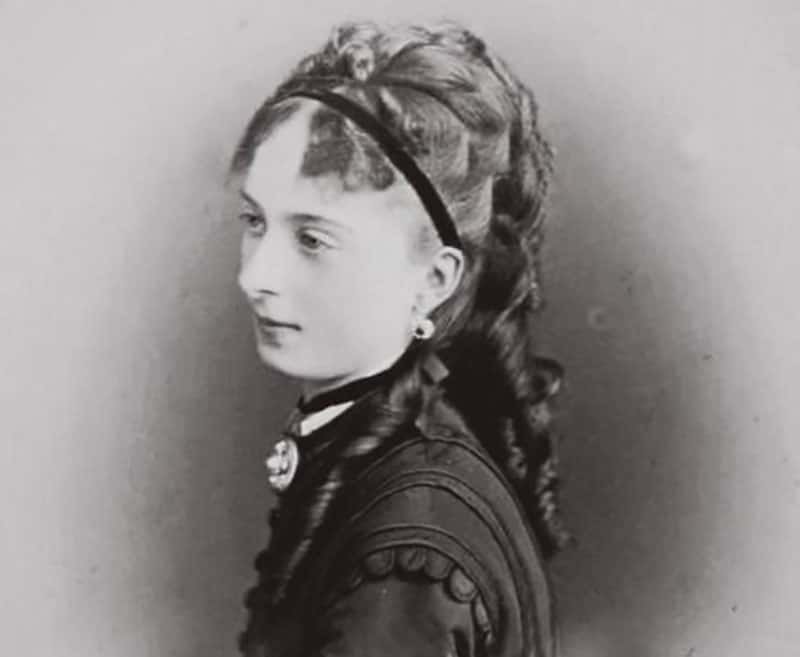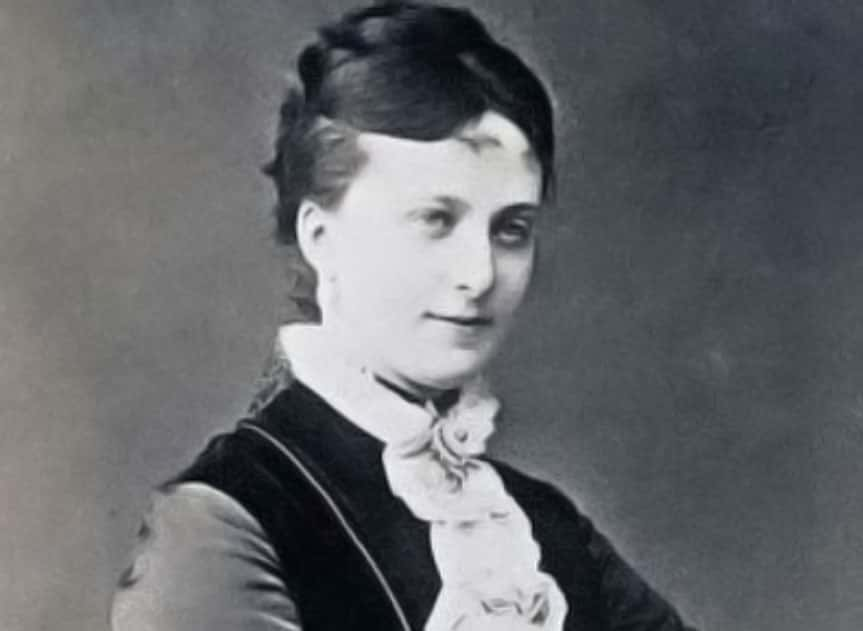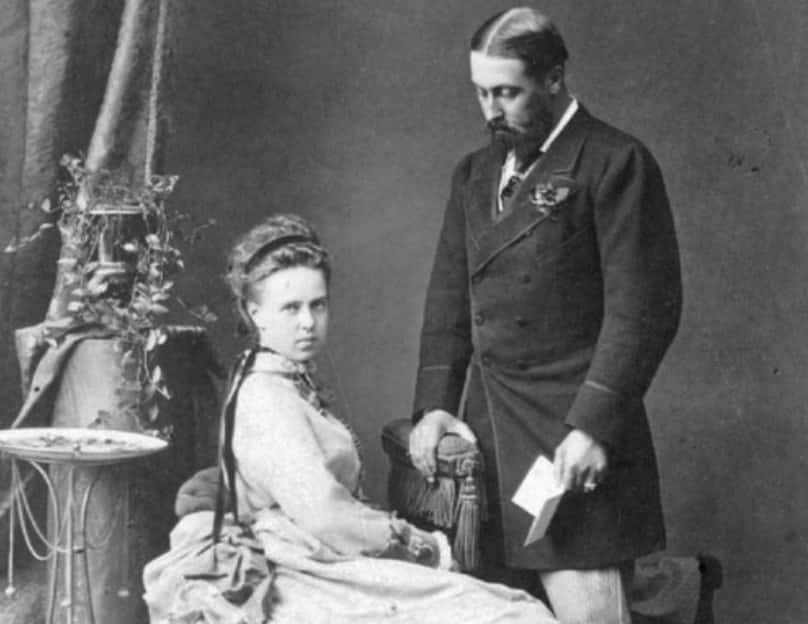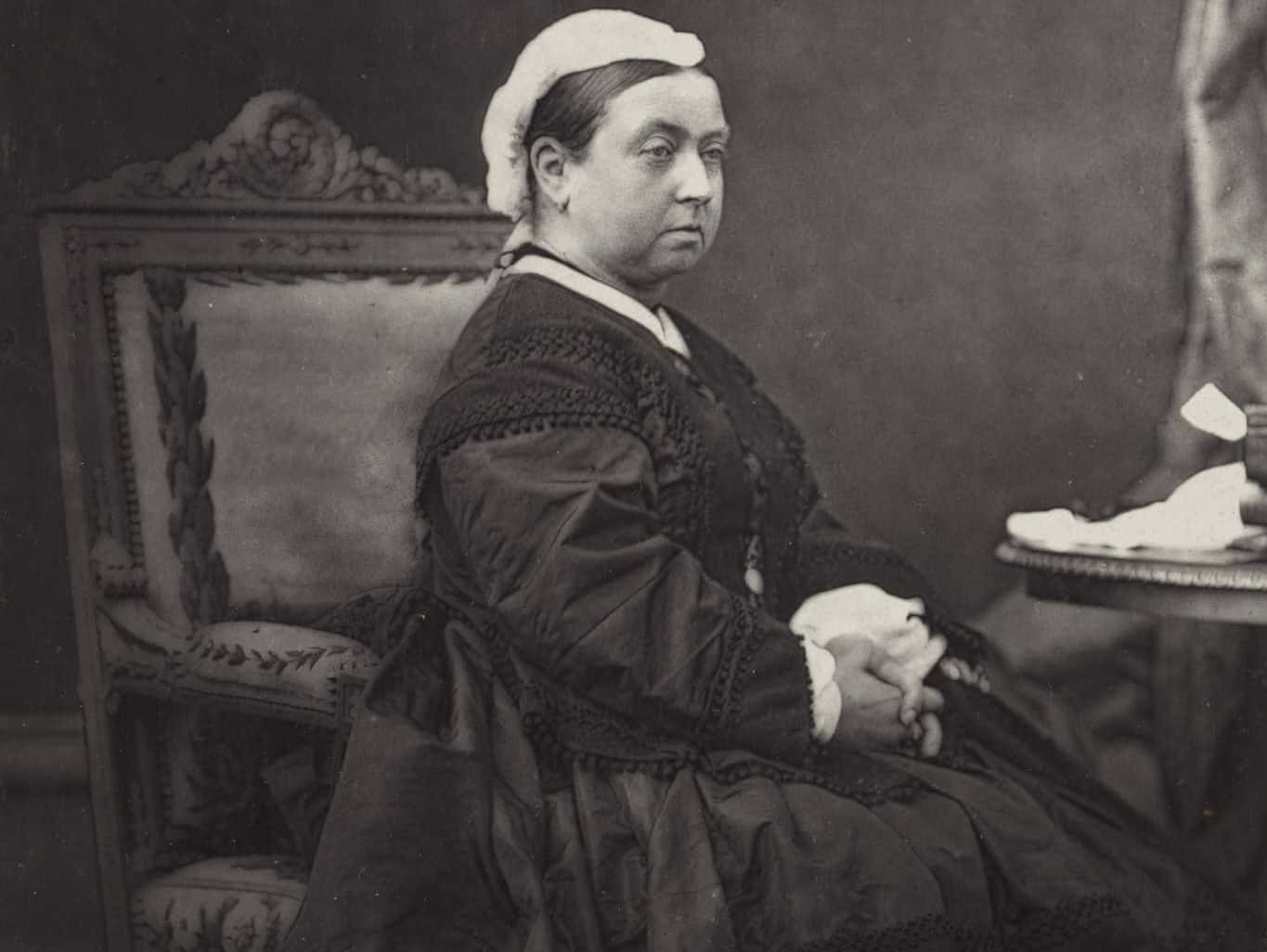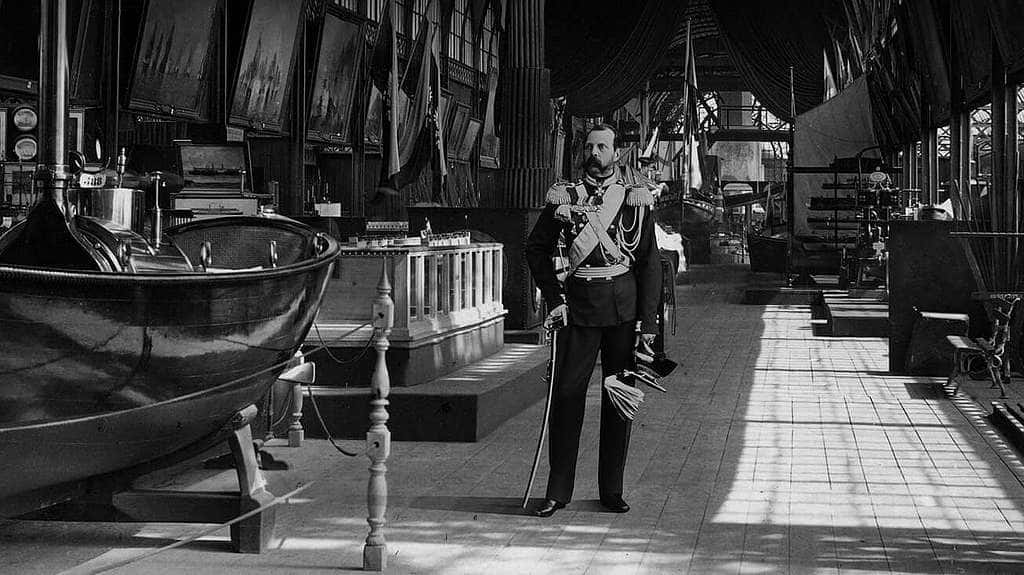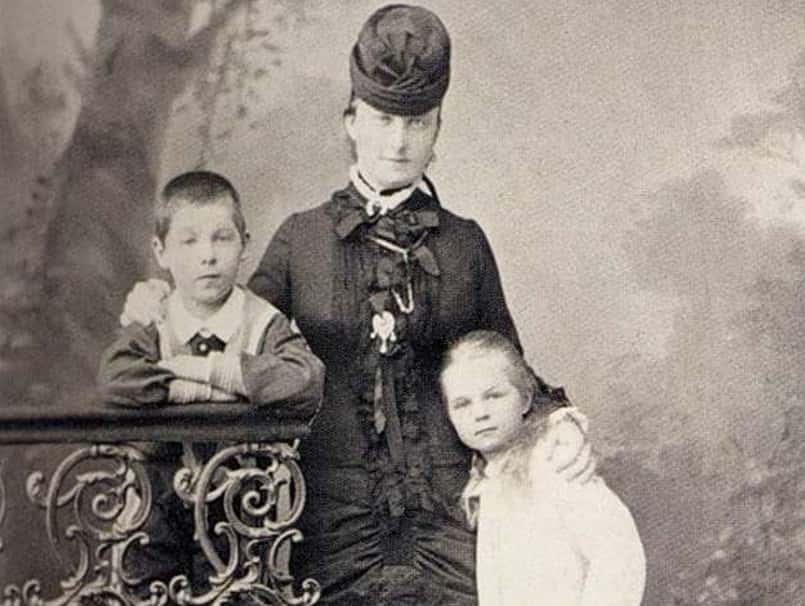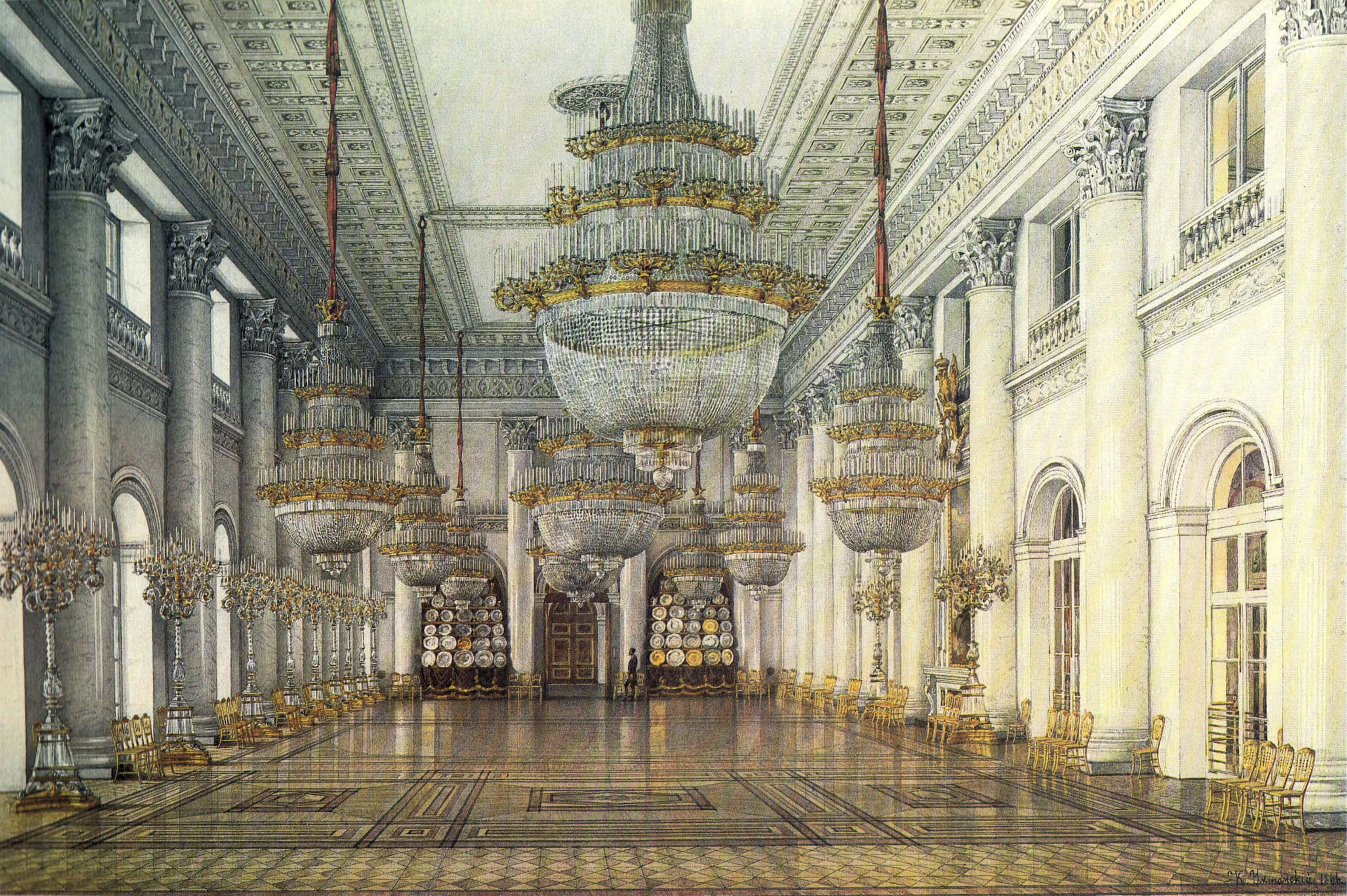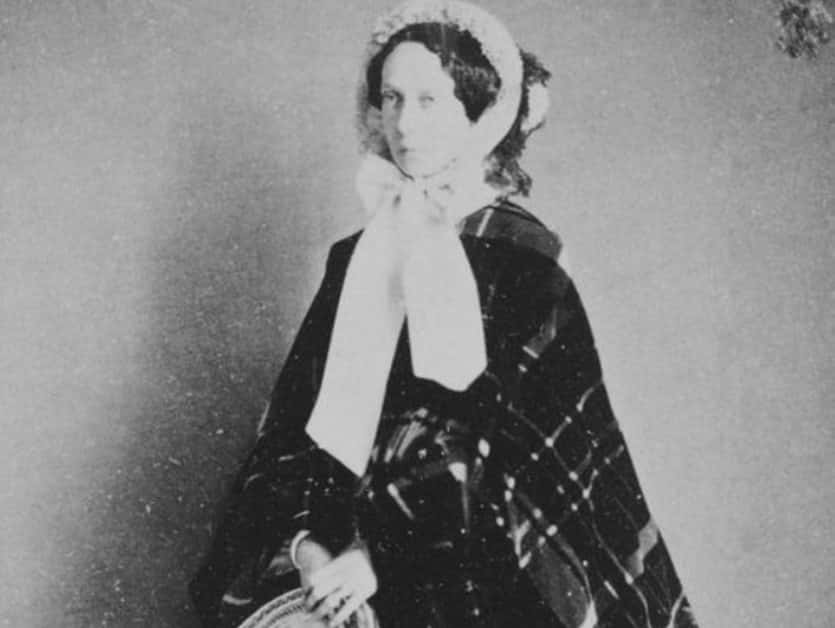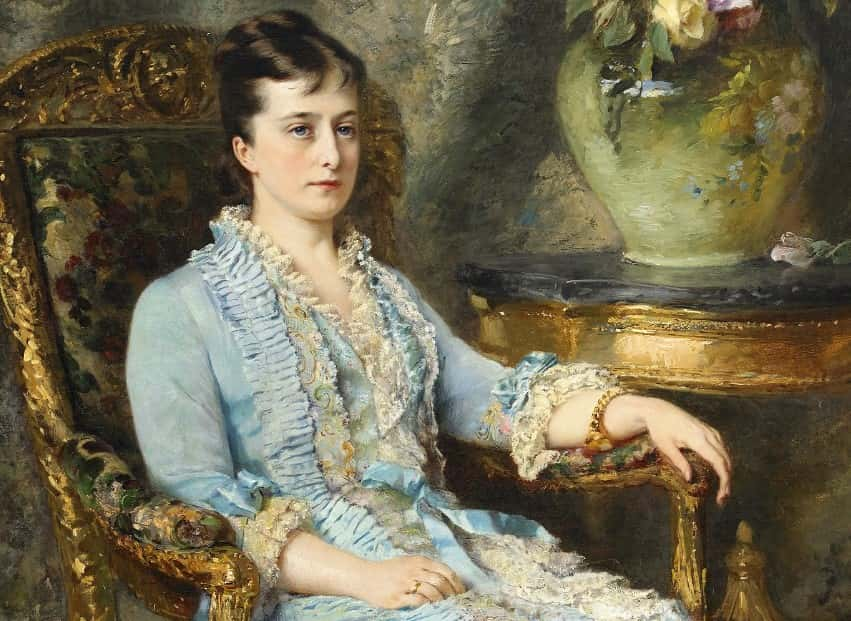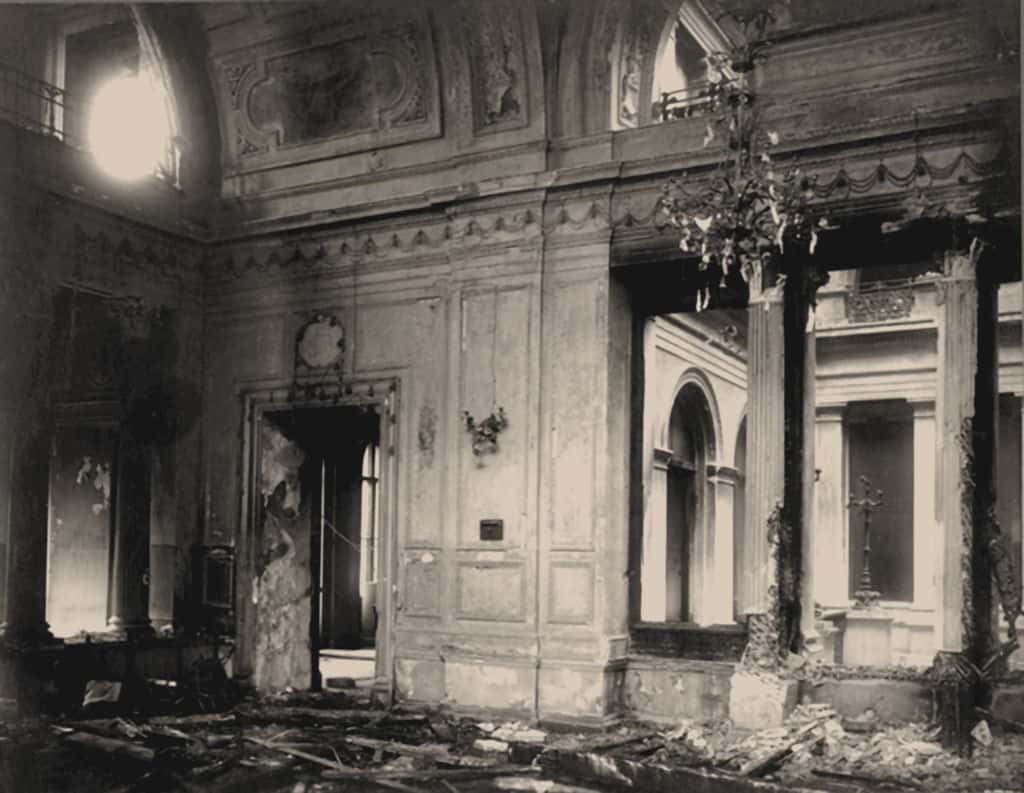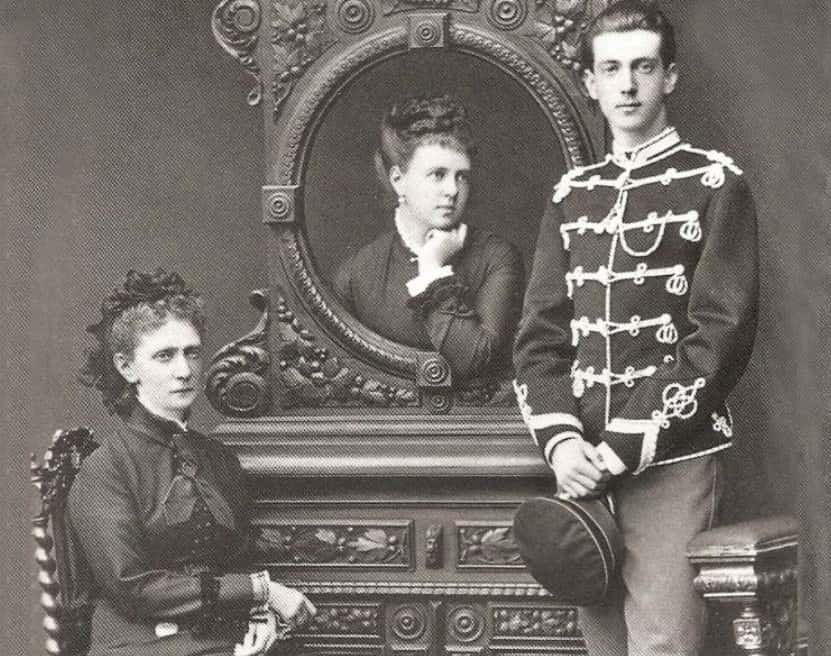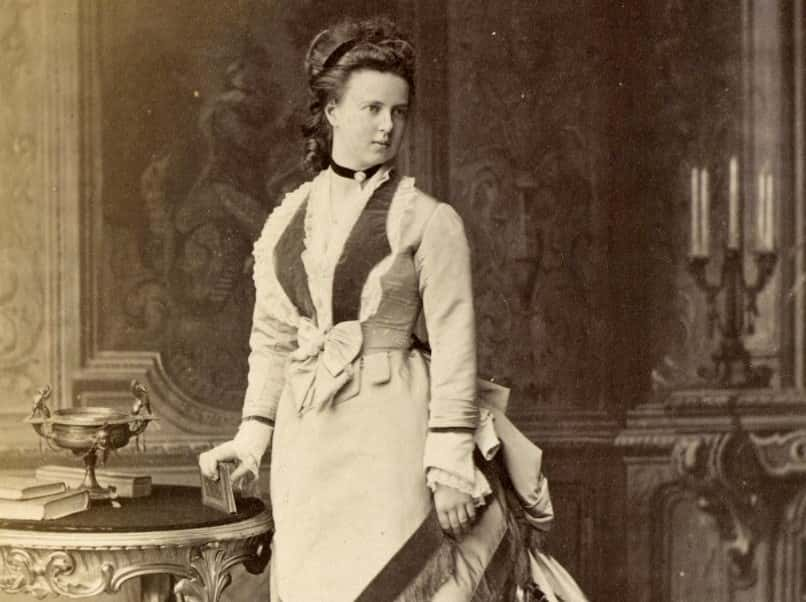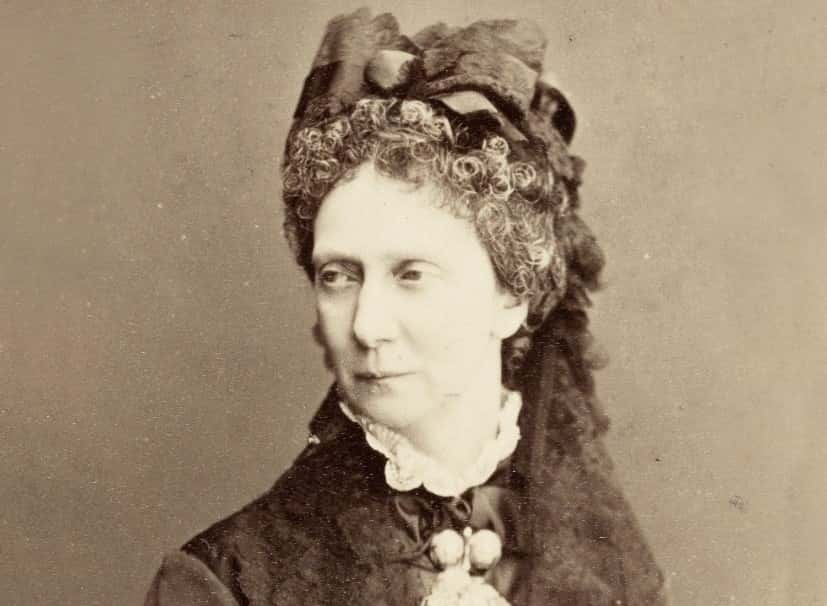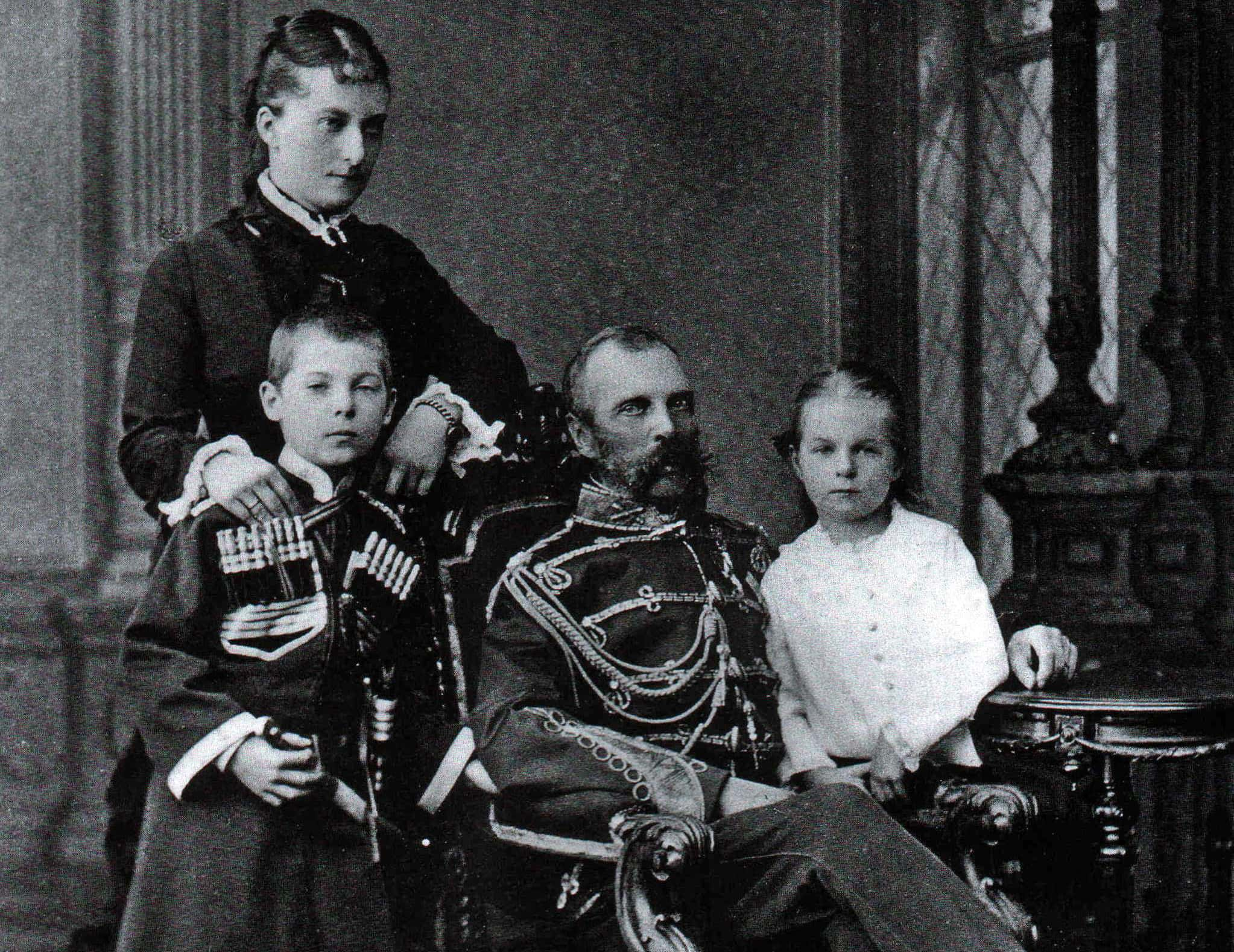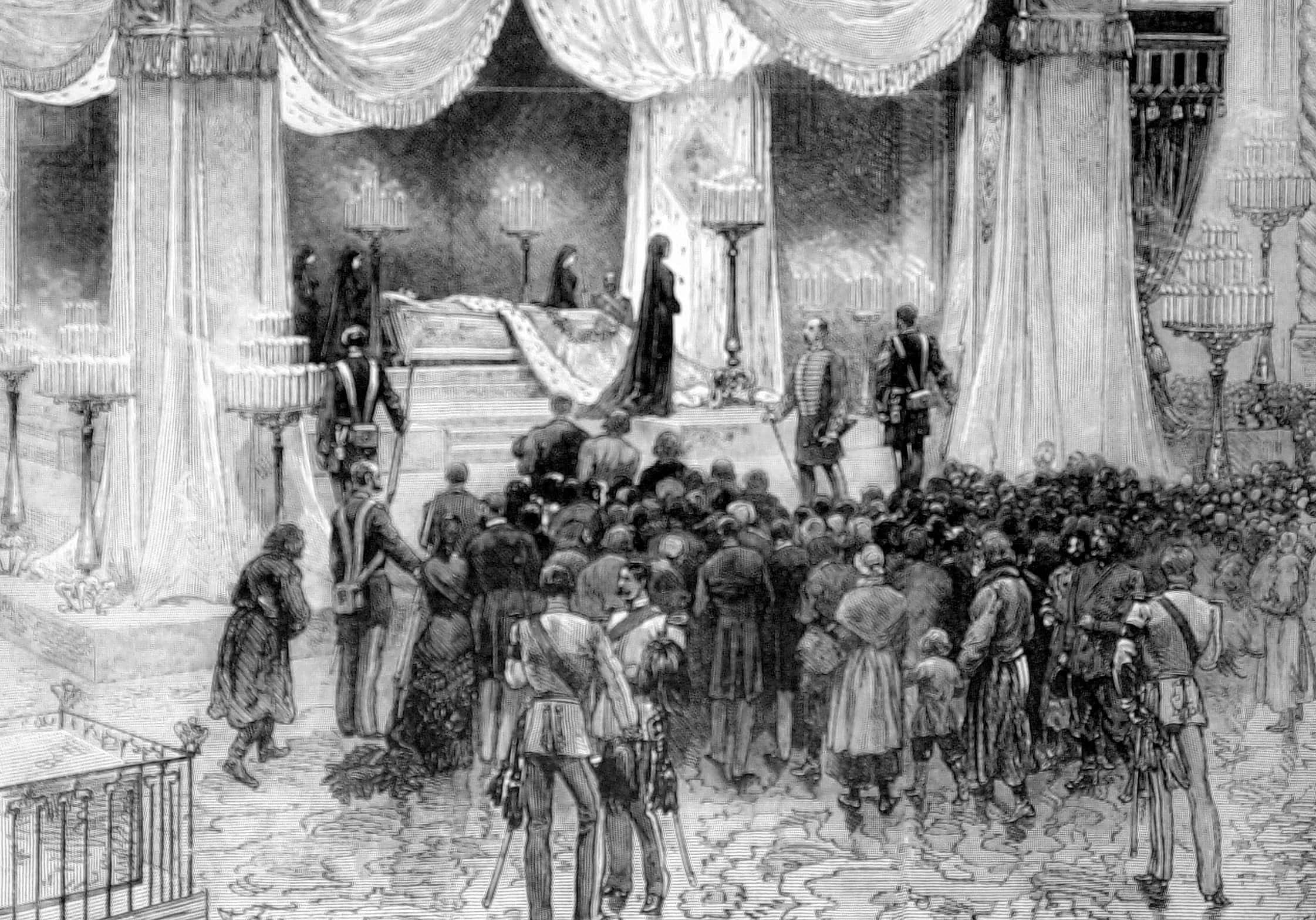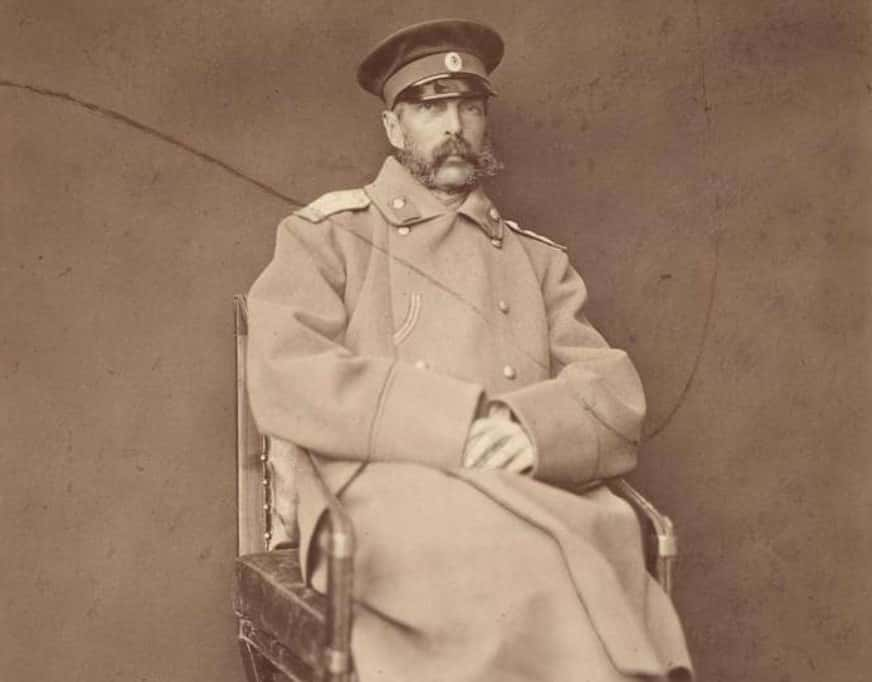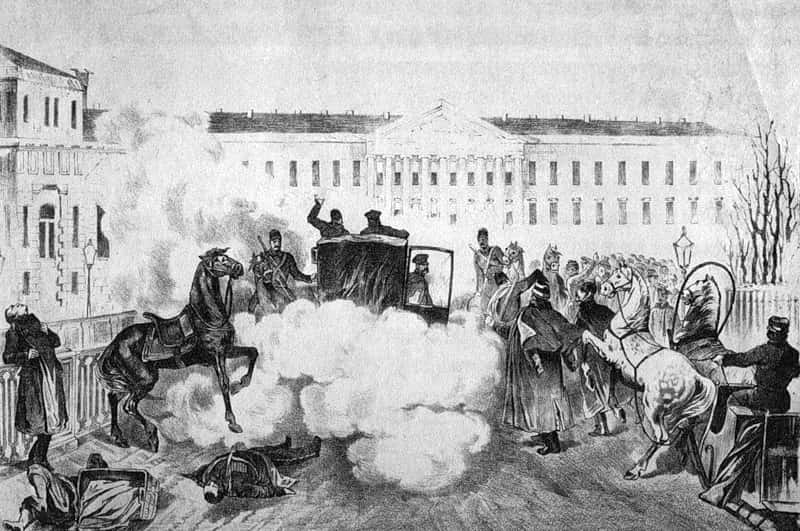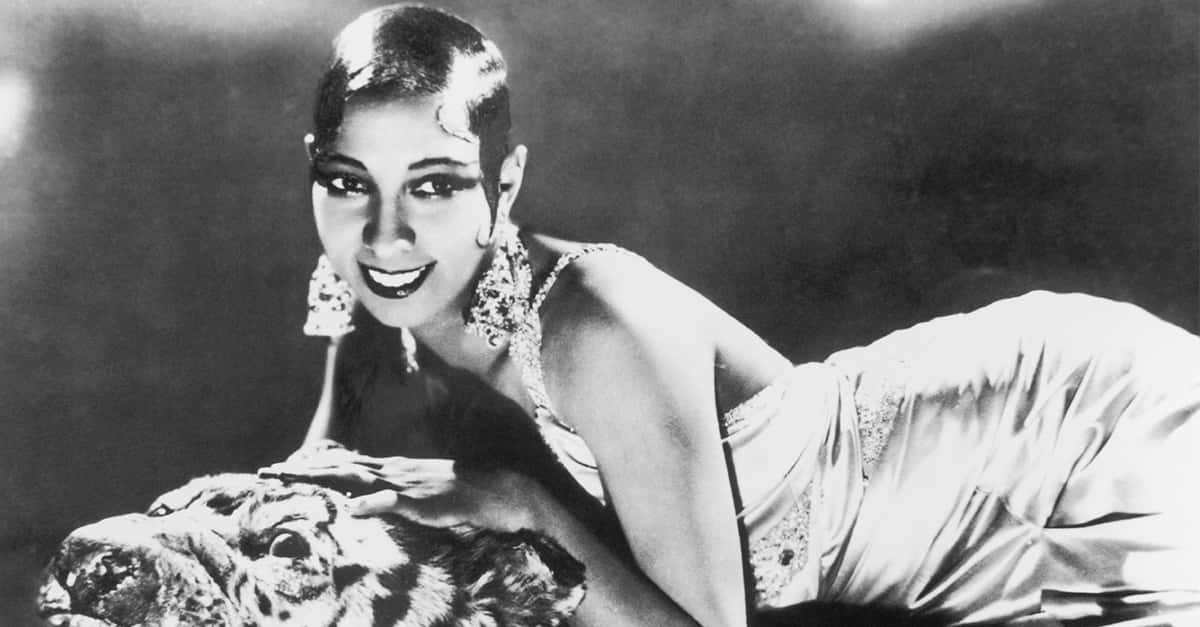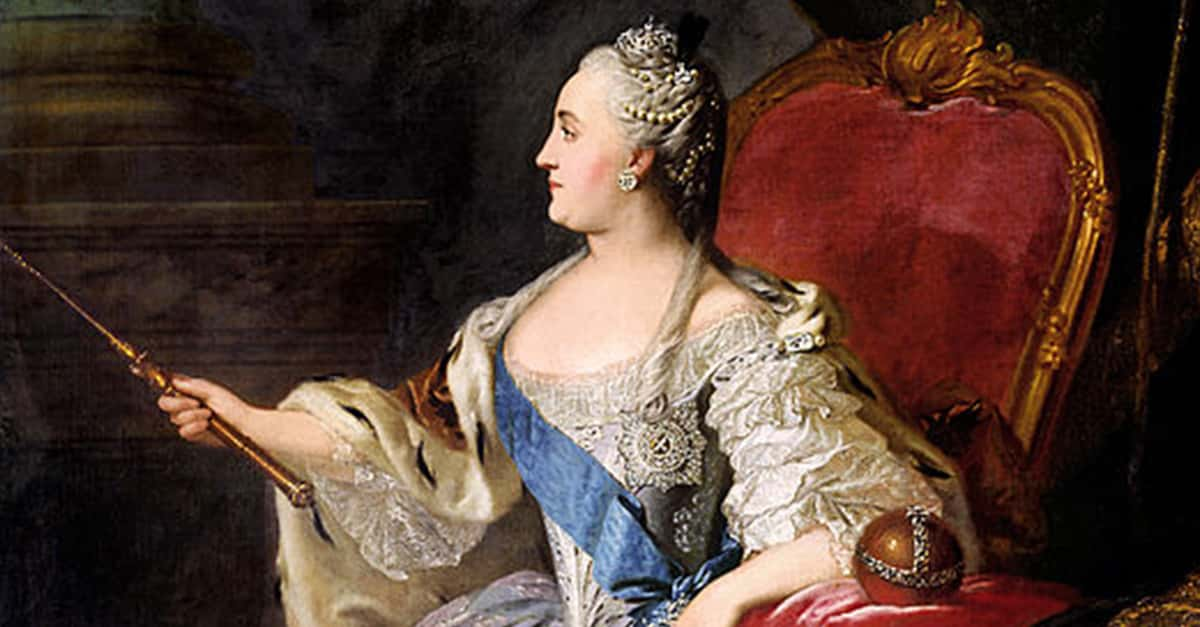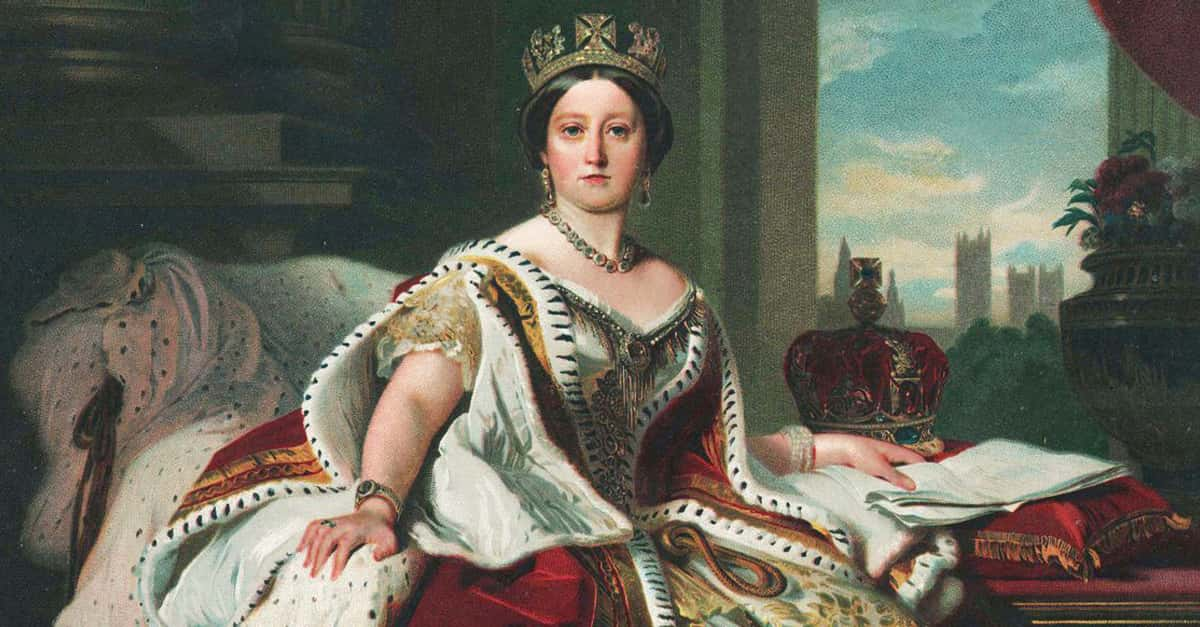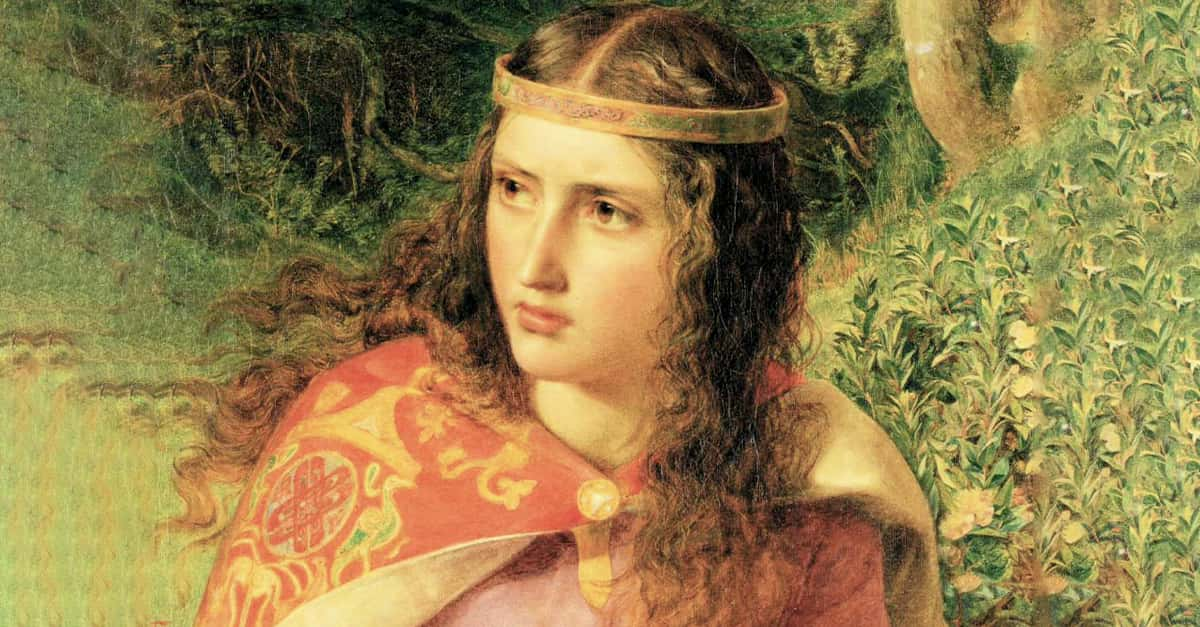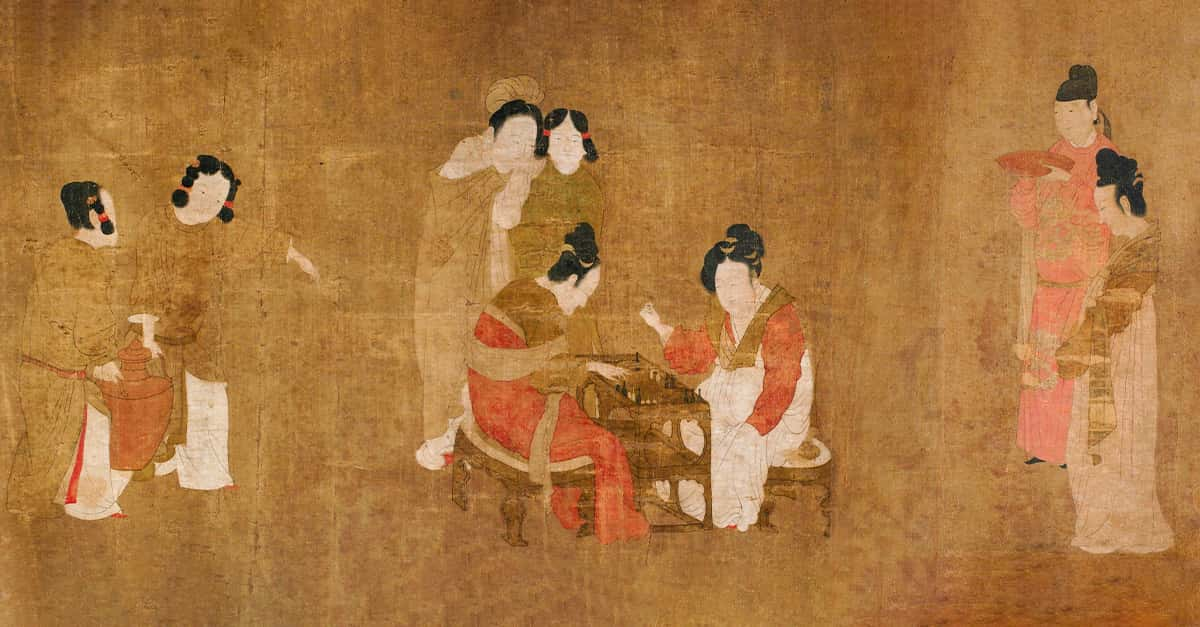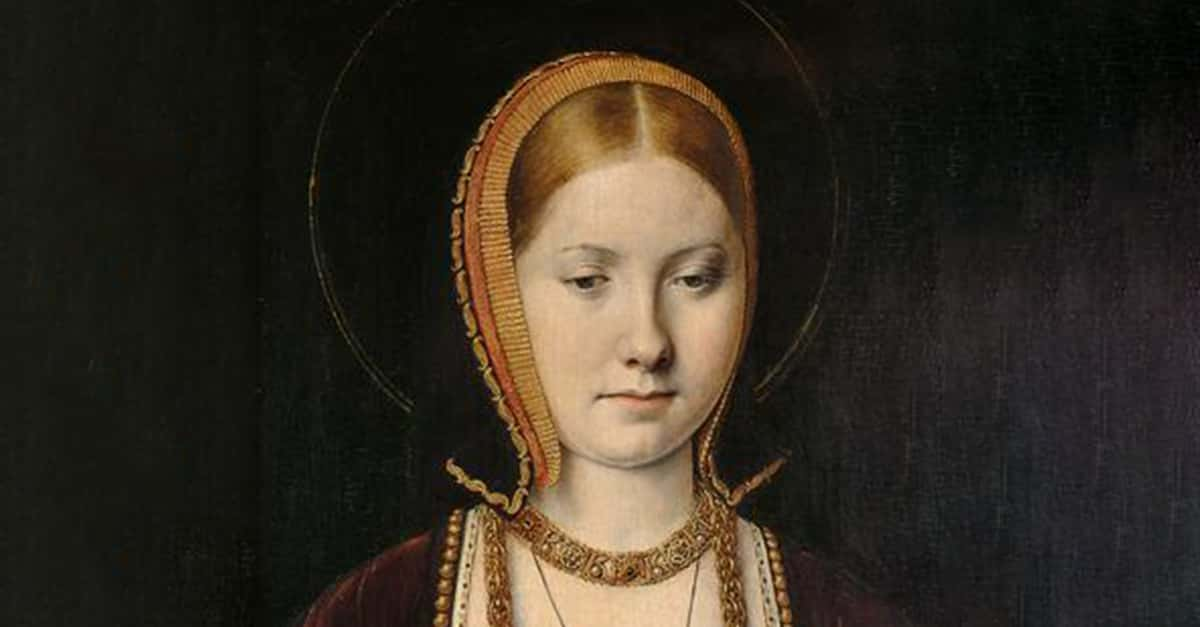Maria Alexandrovna, The Lonely Empress
Even during her glory years, Empress Maria Alexandrovna was something like a ghost walking the halls of the Winter Palace in St. Petersburg. As frail as she was beautiful, the haunting royal often hid from balls and other official events, preferring to let her boisterous, domineering husband take the spotlight. But behind closed doors, Maria kept painful secrets.
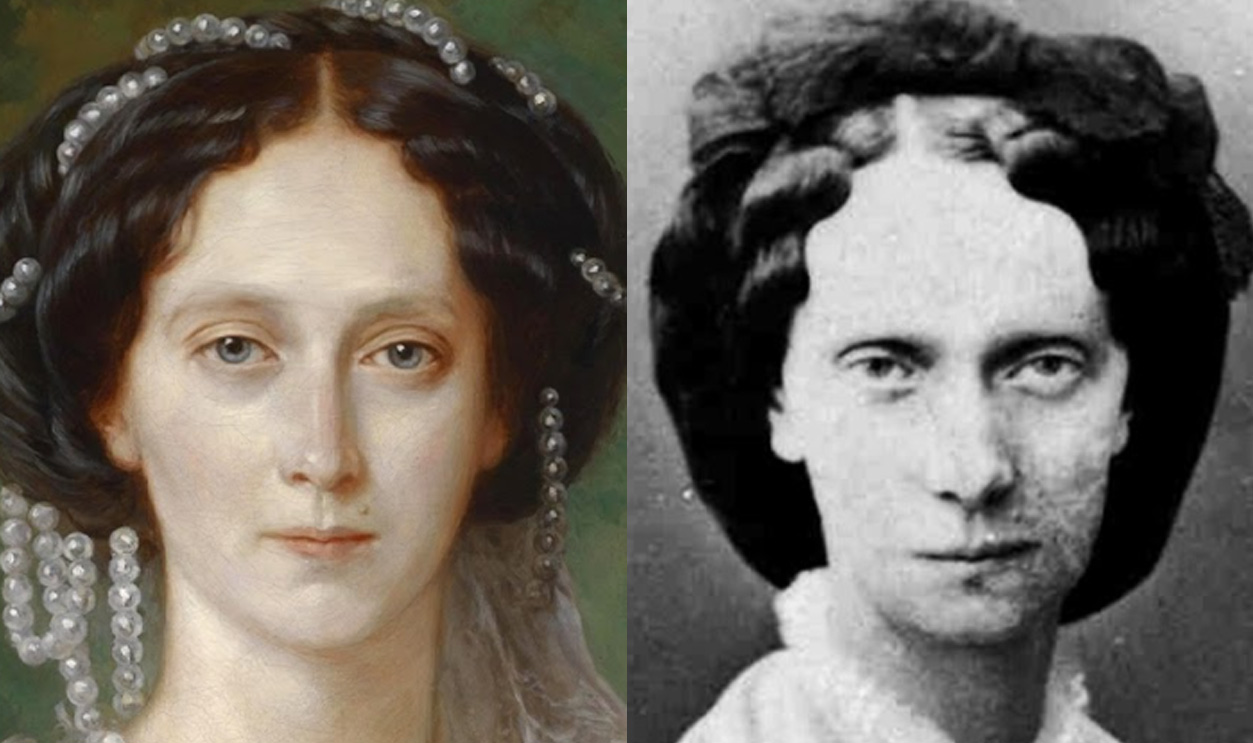
1. She Was A Lonely Girl
Maria’s upbringing was a strange one, especially considering the tragedy she would eventually experience. As the daughter of Grand Duke Ludwig of Hesse and his wife Wilhelmine, you’d think she grew up in luxury. But the reality was much sadder. Thanks to the fact that her father was a total bore, the court at Hesse was staid and strict, and Maria was raised woefully ignorant and naïve.
Then again, maybe this ignorance was a good thing—because her parents were hiding big secrets.
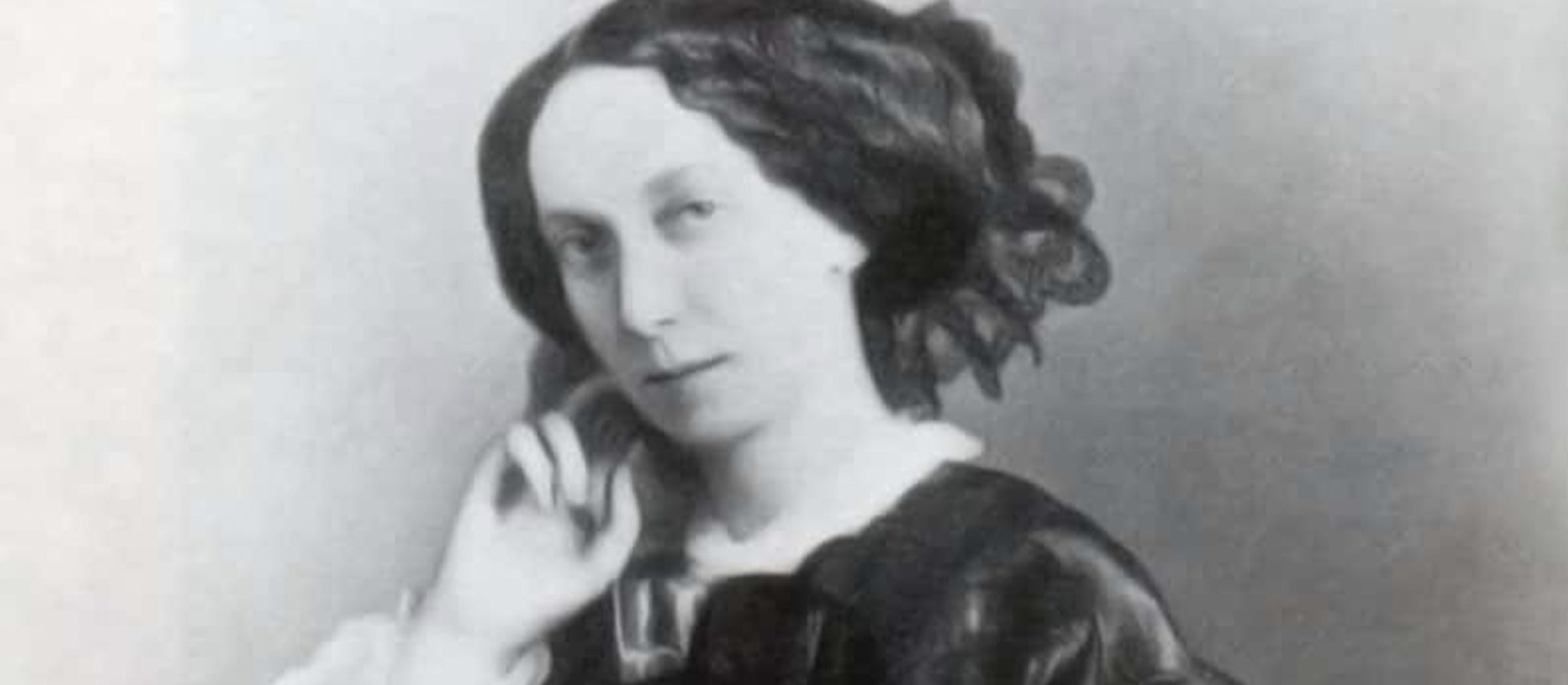
2. She Was A Scandalous Love Child
From the moment of Maria’s birth, a scandalous rumor went around about the girl. Most of Europe believed that she wasn’t actually the Duke’s true daughter, but rather the product of her mother’s illicit affair with the strapping Master of Stables in Hesse, Baron August von Senarclens de Grancy. And far from being harmless gossip, this was about to nearly ruin Maria’s life.
3. She Met Her Prince Charming
In 1839, Maria came face-to-face with her destiny. That year, the heir to the Russian Empire, the hard-partying Tsesarevich Alexander, came to Europe on a grand tour to find himself a bride. Even so, Alexander most definitely didn’t have Maria in mind. In fact, he wanted to skip out on visiting the boring court of Hesse entirely, before his attendants convinced him they needed a break.
Eventually, Alexander reluctantly sat down at the Grand Duke Ludwig’s table. And when he saw Maria, everything changed.
4. He Couldn't Take His Eyes Off Her
From the minute Alexander set eyes on Maria at her father’s house, he was completely in love with her. Still, this is way more creepy than it is romantic. While Alexander was in his 20s at the time, Maria was a bare 14 years old—so young that she still wore her hair loose, in the style that children did. And when Alexander approached her, it got ten times more awkward.
5. She Had An Awkward Courtship
Some couples have adorable meet-cutes, but Maria’s first meeting with the future Tsar almost turned into a disaster. In a detail so awkward it’s still known centuries later, Maria was actually eating a bunch of cherries at the time that Alexander came over. When he approached, she spat them out into her hands in order to talk to him.
Still, it obviously went well after that, because it escalated very quickly.
6. Her Suitor Stopped At Nothing To Get Her
Alexander was used to getting what he wanted, and what he wanted was Maria. Within days, he had written back home to his father and mother, the reigning Tsar and Tsarina, insisting that he had found his bride in Maria and he would look no further. The young prince was so serious, he even made sure to time his letter so that his father would receive it on a feast day and think it was a good omen.
In April 1840, the engagement became official. But if Alexander and Maria thought it would be smooth sailing, they were very wrong.
7. Her Mother-In-Law Hated Her
While Alexander’s father was willing to approve the match, the royal mother threw the lovers a curveball. The Tsarina, who was born Charlotte of Prussia, absolutely despised the idea. Thinking her own ancestral Germanic house better than Hesse, Charlotte sneered at Maria’s heritage—but more than that, she believed the rumors of Maria’s illegitimacy, and scorned the idea of a love child polluting the glory of her Russian Empire.
To convince her potential mother-in-law, Maria had to resort to desperate measures.
8. She Worked Overtime To Impress
Over the next months, Alexander visited Maria in her home city of Darmstadt as much as humanly possible, while Maria herself pored over Russian books, single-mindedly trying to learn Russian as quickly as she could. That summer, the teenager even staged a meeting with the Tsarina to show off how much she had learned. It paid off—big time.

History's most fascinating stories and darkest secrets, delivered to your inbox daily.
9. She Got What She Wanted
With the help of Maria’s ambition and studies—plus the fact that Alexander threatened to give up the throne rather than give up his bride—the young couple finally got what they wanted. The Tsarina gave her permission for the union to go ahead, and by the end of the summer, Maria packed up and headed to Russia to get settled in before her marriage.
She couldn’t have known it then, but she was walking into her worst nightmare.
10. She Hated Her New City
Growing up in a quiet, austere court as the maybe-illegitimate child of an affair had not done wonders for Maria’s confidence. So she entered the decorative and declarative city of St. Petersburg as a shy, reserved princess who, while very ready to do her duty, wasn’t very ready to party. In other words, she was at complete odds with the spirit of the city, and it began to show fast.
11. She Had Breakdowns
On the outside, Maria put on a brave show for her new betrothed as well as her hard-to-please mother-in-law. But behind closed doors, she was falling apart. One of her ladies-in-waiting later admitted that after the glittering balls, "under cover of darkness and the stillness of her room, she would give freedom to her muffled cries". Unfortunately for Maria, her biggest trial was yet to come.
12. Her Wedding Wasn’t About Her
When Maria chose Alexander as her fiancé, she may have forgotten one crucial thing: He loved parties. So much so that when it came time to pick the wedding date, he decided it should be on the eve of his 23rd birthday, making it more his day than hers. Thus, at the end of April 1841, Maria became an official member of the Russian Imperial family. Which is about when the royal rumor mill went into overdrive.
13. The Court Turned On Her
Even though Maria grudgingly put in face time at court parties, she did a horrible job of hiding her distaste for the opulence of St. Petersburg. The results were humiliating. People began to see her as boring, even disdainful, spurring her father-in-law Emperor Nicholas I—one of her only allies—to forbid anyone from sullying her name in his presence.
Still, even the emperor couldn’t protect Maria from the trials to come.
14. She Was Constantly Pregnant
Throughout the 1840s, Maria gave birth to a succession of children. While her first child, Alexandra, was a girl, the next three—Nicholas, Alexander, and Vladimir—were coveted male heirs and completed the happy family. For a few shining years, the royal couple lived an idyllic lifestyle, constructing private gardens for their children and generally presenting a united front.
Then, in 1849, it all came crashing down.
15. She Suffered Through A Mother’s Worst Nightmare
Alexander and Maria had always doted on their eldest—and at that point only—daughter Alexandra. But a vicious twist of fate tore the little girl from their lives. When she was six, Alexandra fell ill with infant meningitis and passed. The loss sent the whole palace into a state of shock, but Maria’s reaction was nothing short of heartbreaking.
16. She Never Recovered From Her Loss
Sure that Maria was on the verge of a physical and mental breakdown in the wake of her grief, her doctors sent her all the way to Estonia to recuperate some of her health and energy. Still, it gave Maria precious little comfort: Even years later, she couldn’t talk about her long-lost daughter without breaking into sobs. Yet another ordeal was just around the corner.
17. She Wanted A Replacement Child
Alexander and Maria were determined to push on after the passing of little Alexandra, and a year later Maria gave birth to yet another child, a son they named Alexei. Only, her joy was a double-edged sword. For one, the couple still craved a little girl, not a little boy. But more importantly, the weight of the past decade was starting to take an enormous and terrifying toll.
18. She Took Desperate Measures
Maria had birthed almost as many children as years that she had been married to Alexander, and the physical strain took her health to the very edge. Indeed, doctors had been urging the royal to slow down since the birth of her third son, and they were now all but begging her to recuperate rather than get pregnant again. But Maria still seemed desperate for a girl—and she stopped at nothing to get one.
19. She Finally Got A Girl
In 1853, all Maria’s prayers were answered. Just before she turned 30, she gave birth to little Maria Alexandrovna. Although the woman managed to have another two children after that—both boys—the one and only surviving girl in the family got much of the royal attention, with the patriarch Alexander in particular shamelessly favoring their daughter.
Yet as with so much in Maria’s life, the minute she thought she had everything figured out, the ground shifted underneath her feet.
20. She Became Tsarina Amidst Conflict
In 1855, Emperor Nicholas I passed from pneumonia, and suddenly Maria was now Empress of all of Russia alongside her husband. But the passing of the torch couldn’t have come at a worse time. Embroiled in the Crimean War, Russia had just surrendered in a humiliating defeat. If there was any moment where Maria’s people needed a win, it was now. Only, the coronation delivered the opposite.
21. Her Coronation Was A Disaster
In the summer of 1856, the Moscow Kremlin was lit up with all the opulence Alexander and Maria’s court could muster so their subjects could watch them get crowned. It nearly ended in disaster. In a spectacularly bad omen, Maria’s attendants actually dropped her crown as they tried to place it on her head. And superstition or not, it was a dark foreshadowing.
22. She Held Great Power
Although she was shy and unassuming, Maria actually held immense power. Alexander trusted her deeply, and took her into his confidence when it came to ruling his increasingly unruly nation. She even helped him with his famous Emancipation Proclamation in 1861, which gave freedom to Russia’s serfs—although it also stirred up further dissent from conservatives and radicals alike.
But if her public life was a dangerous tightrope, Maria’s private life was becoming even more precarious.
23. Her Body Failed Her
By the time Maria had her last two sons, Sergei and Paul, her body had practically given out, and doctors kept sending her to longer and longer stays in spa towns so she would have some time to recuperate. When Paul came into the world, she had to literally spend months on end lying on a couch rather than exerting and exhausting herself in any way.
Eventually, her deterioration led to a very private decision—with very big consequences.
24. She Wasn’t Allowed To Sleep With Her Husband
With Maria’s health getting worse with every baby she had, doctors gave her devastating news. They finally said she needed to completely stop having intimate relations with her husband, lest she get pregnant again and put her body through an ordeal it could no longer come back from. Maria and Alexander listened—but in many ways, this was the beginning of their end.
25. She Played Favorites
As Tsar and Tsarina, Alexander and Maria accepted their new reality as best they could, with Maria turning ever more to the upbringing of her children. The Tsarina’s favorite child was her eldest son Nicholas—who not-so-coincidentally looked exactly like his mother—and she was overjoyed when he fell in love with Princess Dagmar of Denmark and chose her as his bride.
The next months and weeks should have been full of celebration for the future. They were anything but.
26. Her Son Fell Gravely Ill
As Maria prepared for her heir to marry, tragedy struck in the worst way imaginable. While traveling through Europe, Nicholas contracted spinal meningitis—a version of the same illness that felled his little sister all those years before—and was suddenly on his deathbed. Maria and Alexander rushed to be at their son’s side, along with his fiancée Dagmar.
Faced with losing their heir, the Tsar and Tsarina made an unusual decision.
27. She Made An Indecent Proposal
When Maria went to see Nicholas in his final moments, she also brought her next-eldest son Alexander with her…and she definitely had ulterior motives. See after Nicholas passed, she wanted Dagmar to marry her younger son. Even creepier? In his last moments on Earth, Nicholas sanctioned the match as well, and the pair would marry only a year later.
But none of these maneuvers could avoid the inevitable tragedy of Nicholas’s end—and it was more painful than Maria could handle.
28. She Lost Her Son In A Brutal Way
In April 1865, Maria watched as her favorite child slipped into unconsciousness and then passed. The horror that followed was overwhelming. Maria still hadn’t recovered from the loss of her first child, and watching Nicholas die completely broke her. In the following years, she held on to every shred of Nicholas’s life that she could, but nothing could bring him back for real.
Now in her 40s, Maria must have felt like she had to start her life all over again, with a marriage closed to intimacy and her son in the ground. In reality, there was no fresh start. It only deteriorated more.
29. Her Marriage Floundered
A year after their son’s passing, Tsar Alexander and Maria celebrated their silver wedding anniversary. Yet despite this milestone, all was not well in the Imperial union. The pair still got along pleasantly enough, but years of avoiding intimacy had done irreparable damage to their love. They now spent precious little time with each other. This was about to catch up to them...
30. Her Husband Cheated On Her
Tsar Alexander had always been vigorous and boisterous, but in the last few years, he had developed a scandalous bad habit. Although he had never been 100% faithful to his reserved, petite wife, he’d always kept her supremacy in his heart as well as in the court hierarchy. But with these recent trials, Alexander’s wandering eye turned downright dangerous.
31. She Made A Fatal Error
In 1865, the year of Nicholas’s passing, Maria’s husband dealt her the ultimate betrayal. He fell stupidly, head-over-heels in love with a school girl named Catherine Dolgorukova. And while Maria knew about his attentions toward Catherine, she assumed it was another infatuation and nothing to worry about. She was extremely mistaken, and she would live just long enough to regret it.
32. She Had A Fierce Rival
There were disturbing signs about Tsar Alexander and Catherine from the start. For one, the Tsar had first met Catherine when she was only 11 years old, but somehow didn’t let that—or their nearly 30-year age gap—stop him from pursuing her as a teenager. More than that, Catherine was no dummy: She refused to give into Alexander’s advances for an entire year, stoking his obsession with her even further.
By 1866, Maria’s husband was as far away from her emotionally as he’d ever been. And then true disaster struck.
33. The Nation Rose Up Against Her
In the spring of 1866, Maria received gut-wrenching tidings. Her husband had been out in St. Petersburg when a rebel, unhappy with Russia’s policies, tried to assassinate the Tsar. He nearly succeeded, with Alexander only making a narrow escape. It was the first real evidence that Maria and Alexander’s hold over their nation was crumbling—but there was another awful detail to that day.
34. She Lost Her Hold Over Her Husband
Maria hardly could have known it at the time, but the day of the attempted assassination was also the day she truly lost her husband forever. Shaken and insecure, Alexander had gone not to his wife for consolation, but to his young "protégée" Catherine Dolgorukova—and they finally consummated their union not long after the attack. Incredibly though, it still got worse for poor Maria.
35. Her Power Was In Danger
In a move that was horrific even for Alexander, the Tsar wasn’t content to just keep Catherine as his mistress, oh no. After finishing up the deed that first time, all while Maria was at home waiting for him, Alexander reportedly told Catherine, "Now you are my secret wife. I swear that if I am ever free, I will marry you". Spoiler: This was very bad news for poor Maria.
36. She Hated A Fellow Queen
In 1874, Maria lost her only daughter Marie in an entirely new way: The girl married the English Prince Alfred, a younger son of Queen Victoria, and Maria was not happy about the union. She distrusted and disliked Victoria, once insulting her as a "fish-wife" and complaining to her daughter that "it is difficult to take such a mother-in-law seriously".
Then again, Queen Victoria had even more vicious words for Maria.
37. Queen Victoria Scorned Her
When it came to British and Russian relations, the bad feelings were mutual. Victoria was known to insult Russia as a whole in her letters to her son—but she saved a special kind of brutality for Maria. When they met face-to-face, Victoria recalled Maria in sickly-sweet terms, calling her "very ladylike, kind and amiable". But she also finished with a backhand, saying simply "I pity her".
As it happened, there was a lot to pity.
38. She Had Many Close Calls
As the years passed and Maria’s children grew up and got married, her life in Russia should have wound down to a quiet, peaceful end. This is not what happened at all. During the 1860s and 1870s, her husband Alexander suffered another three attempts on his life from radicals discontent with the nation’s conservative laws. And behind bedroom doors, the situation was near unbearable.
39. She Had To Endure The Unendurable
In between nearly getting killed, Maria’s wayward husband had been busy in the boudoir with his lover Catherine Dolgorukova. By 1876, they had three children together, but the final insult hit much closer to home. During their dalliances, Alexander would put up Catherine in private apartments at the Winter Palace, often while Maria was there as well.
For her third pregnancy, Catherine even insisted she birth the child in the palace, right under Maria’s nose. Oh boy, did this escalate.
40. Her Competition Moved Into Her Home
By 1880, Alexander had had so many attempts on his life, he no longer thought Catherine or his illegitimate children were safe out on their own in the city. His solution? He just moved them all permanently into the Winter Palace. Court gossip even claimed that he placed them right above Maria’s rooms, so she could hear the pitter-patter of his love children’s feet above her.
Although this wasn’t true, the reality was actually ten times worse.
41. She Became Deathly Ill
When Alexander decided to move Catherine and her brood into the Winter Palace, his timing was acutely malicious. In recent months, Maria’s always shaky health had deteriorated fast, and doctors believed she was in her final illness and would not survive to see the next year. That’s right, Alexander paraded around his live-in mistress in front of his dying wife.
Luckily, the weak Maria had allies within her family—and they were about to get vengeance.
42. Her Family Fought For Her
To the surprise of almost no one except Alexander himself, Catherine was deeply unpopular both at court and within the royal family. Maria’s children with the Tsar despised Catherine as an upstart and did everything they could to shun her and her progeny. At one function in 1881, Maria’s daughter-in-law refused to even clasp Catherine’s hand, deeply upsetting the Tsar.
But Maria and Alexander’s petty foibles were going to come crashing down around them—literally.
43. She Was In The Middle Of An Explosion
In 1880, the Winter Palace turned into a hellscape. That March, assassins came for the Tsar again, blowing up the dining room of the palace at a time when the whole family was supposed to be eating. Luckily, dinner had been delayed that night, so while several guards perished, none of the royals were injured. No, the real injury to Maria came right after.
44. Her Husband Ignored Her
Faced with his own mortality once more, Alexander’s first thoughts were again not for his wife, but for his mistress. With the dining room crumbling around him, the Tsar went flying up the stairs to the bedrooms, shouting "Katya, my dearest Katya!"—even though the frail, dying Maria was also in the palace and could have just as easily been injured.
The younger nobles were furious at the Tsar’s oversight, and they called in the cavalry.
45. Her Daughter Stood Up For Her
In May 1880, just weeks after the attack on the palace, Maria’s daughter Marie came back from Britain to visit her dying mother. What she found shocked and appalled her: Catherine waltzing about the palace and Alexander all but ignoring his wife. In short order, Marie gave her father a tongue-lashing that had him slinking away to a remote manor before paying Maria slightly more attention from then on.
Maria, however, took quite a different approach.
46. She Made A Surprising Decision
While everyone spat fire around the Tsar and his new love, Maria’s response was heartbreaking. Knowing she was dying, she didn’t see the use in holding a grudge. Instead, during some of her final moments, Maria asked that Alexander bring his illegitimate children up to her rooms so she could meet them for the first time. Then it really became a tear-jerker.
47. She Showed Incredible Forgiveness
Maria had gone through too much loss throughout her life not to give grace to others. The Tsar brought up his eldest lovechildren, George and Olga, and Maria proceeded to kiss and bless the young boy and girl. By this point, both she and her husband began sobbing, overwhelmed with emotion and forgiveness for one another. That forgiveness happened none too soon.
48. She Went Out Like A Queen
On June 3, 1880, Empress Maria Alexandrovna finally succumbed to her ill health, passing at the still-young age of 55. Her funeral and burial were fit for a ruler of the Russian Empire, and her children and children-in-law mourned her deeply and remembered her class and elegance. Tsar Alexander, however, had much more disturbing plans in store for his wife’s memory.
49. Her Husband Gave Her A Final Insult
Before Maria was even cold in the ground, her husband committed one final treason. Mere months later—right after the official mourning period was up and long before his family considered it decent—Alexander married his mistress Catherine Dolgorukova, who became the Most Serene Princess Yurievskaya. But don’t worry, Alexander was about to get some very dark karma.
50. Her Tsar Met A Gruesome End
Maria and Alexander’s reign knew endless years of unrest, and in 1881, just a year after her passing, it all finally came to a gruesome head. In March, mere months after his scandalous second marriage, radicals finally succeeded in taking out Alexander, attacking him in the street with a series of explosives. He passed in Catherine’s arms at the age of 62.

